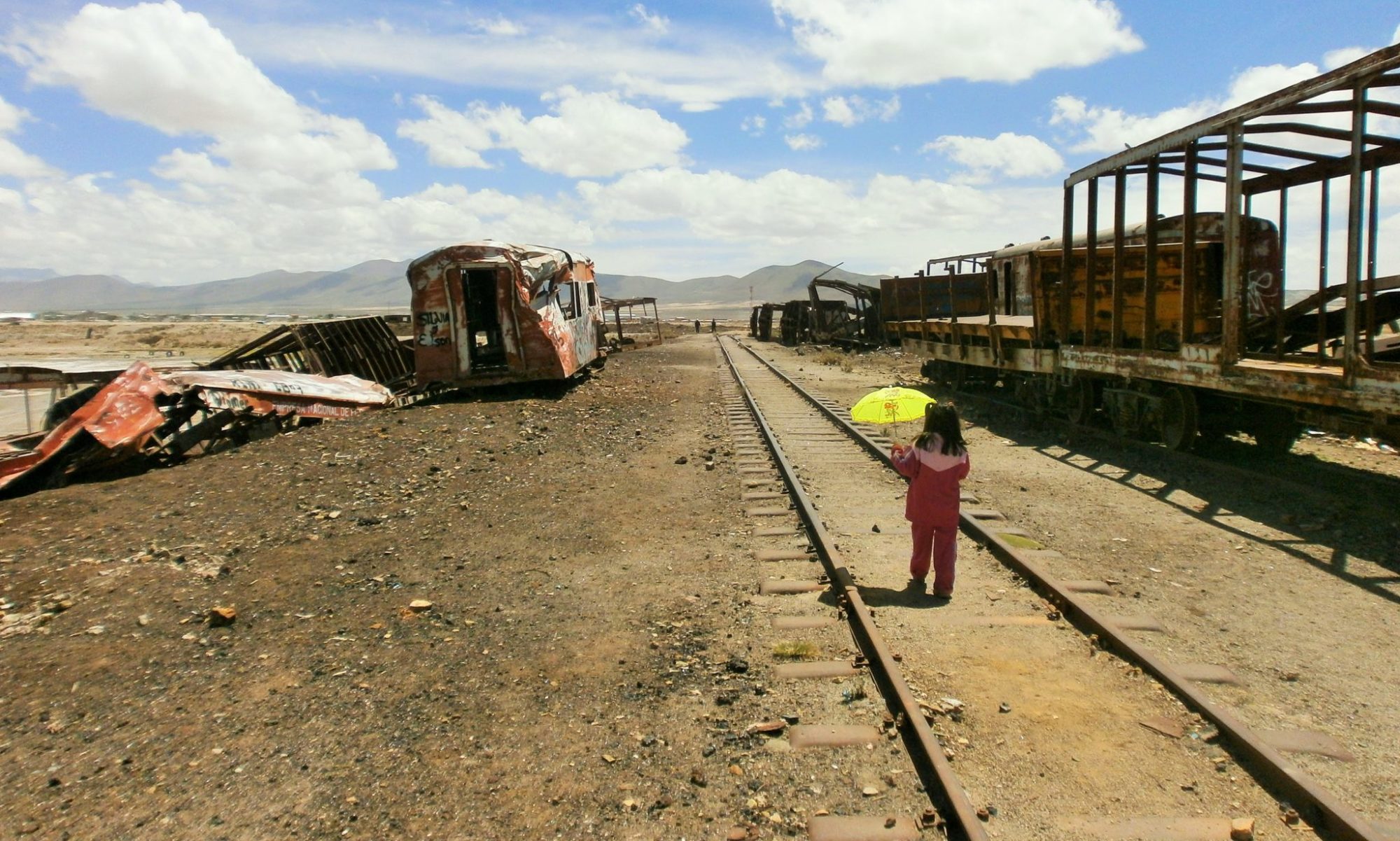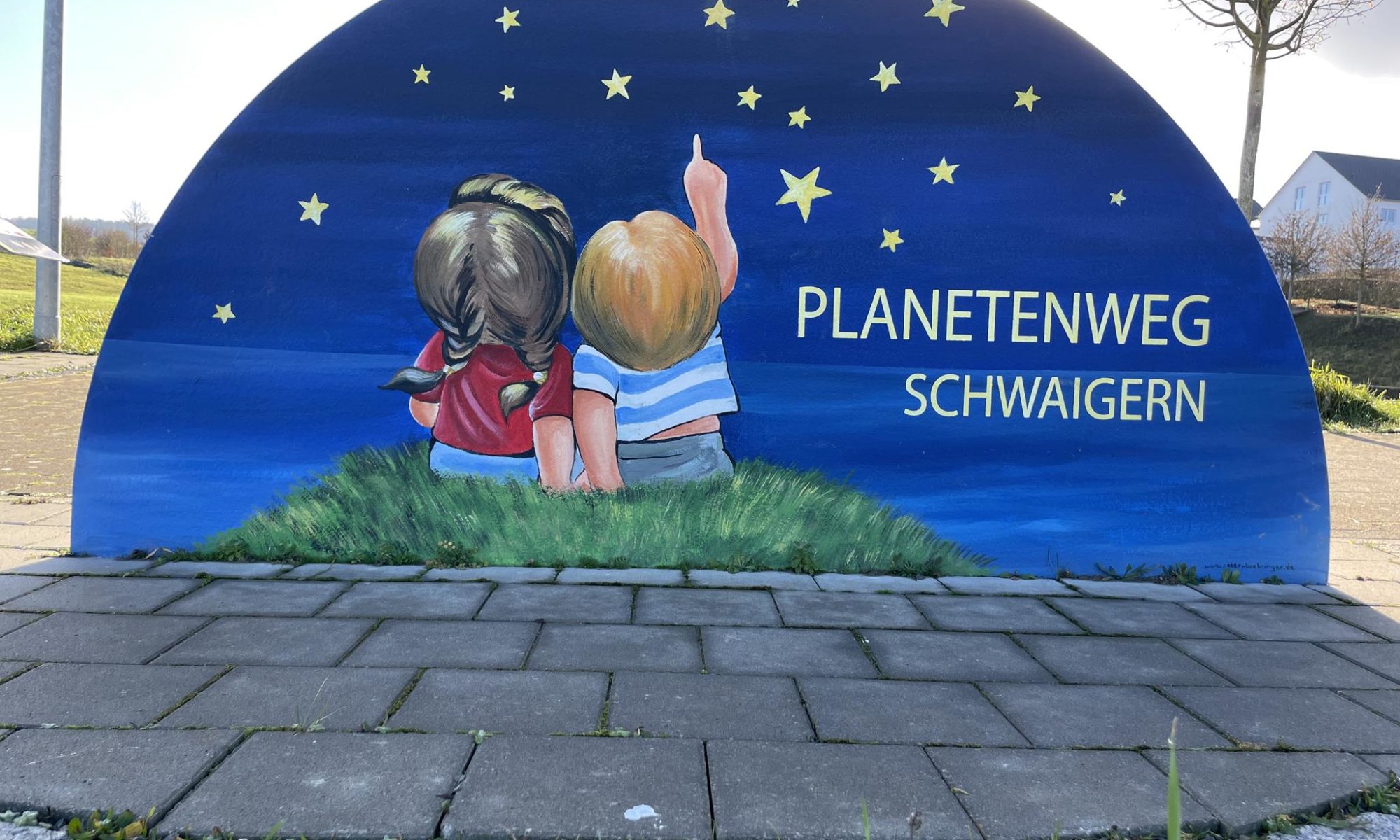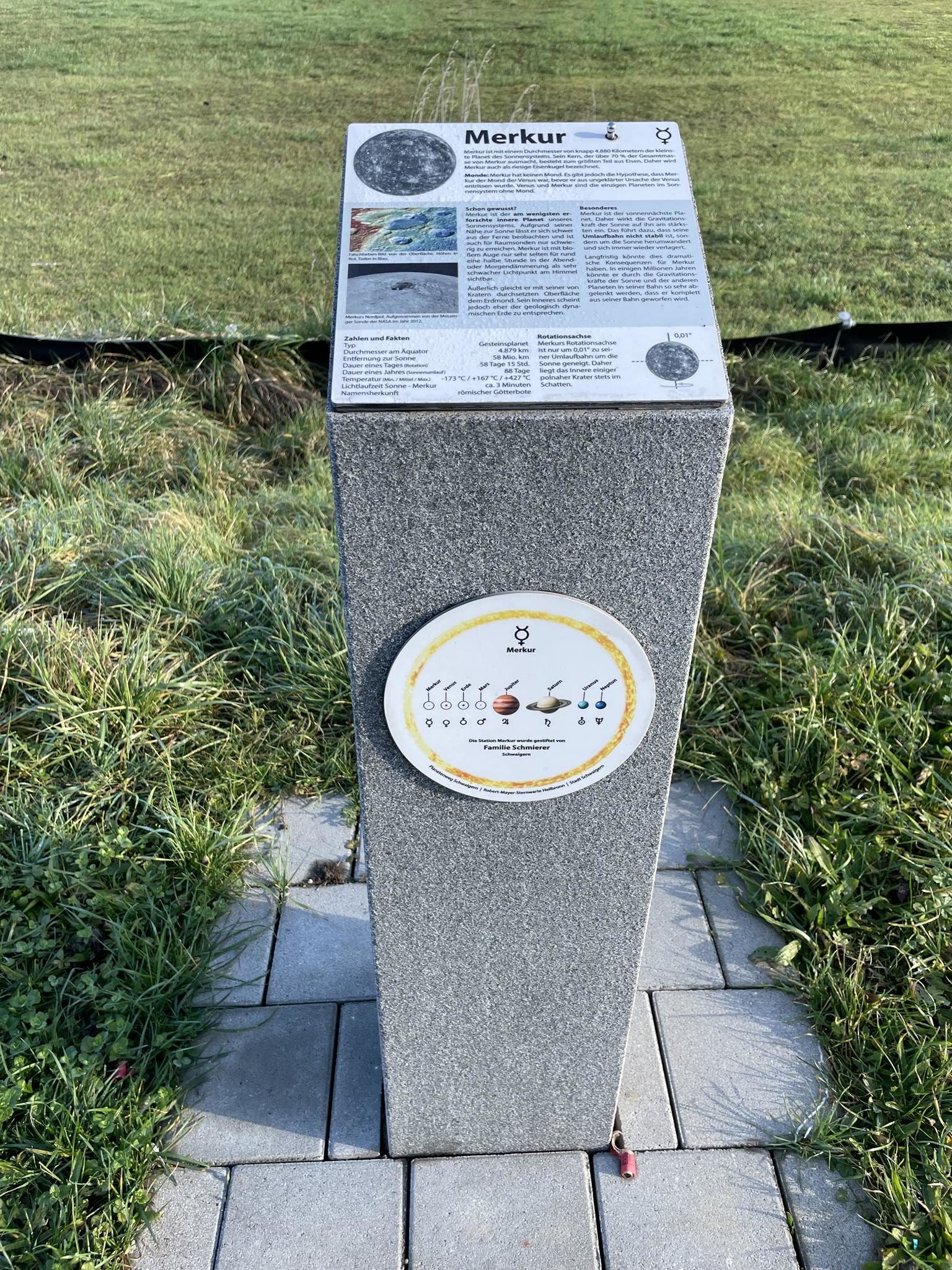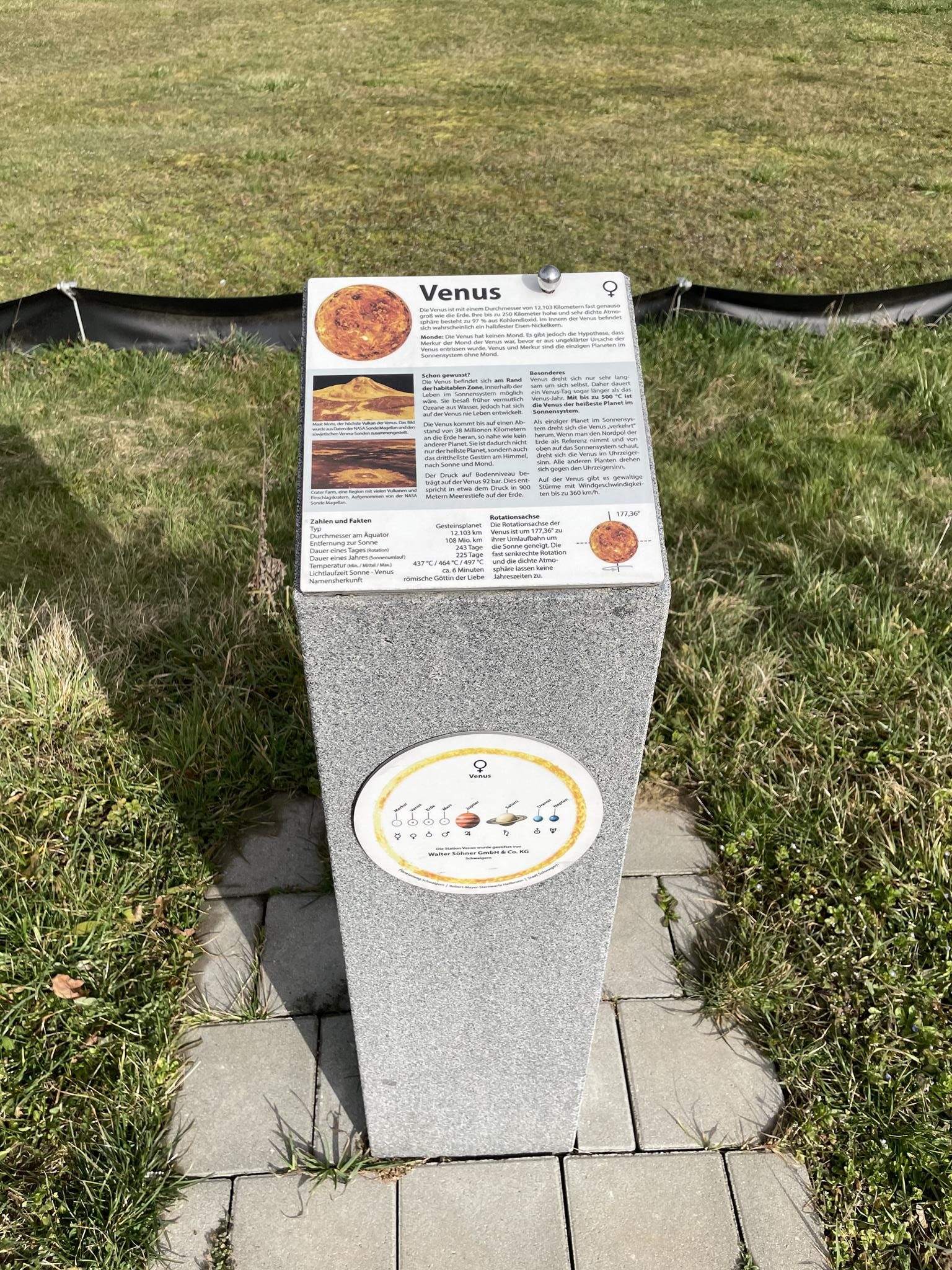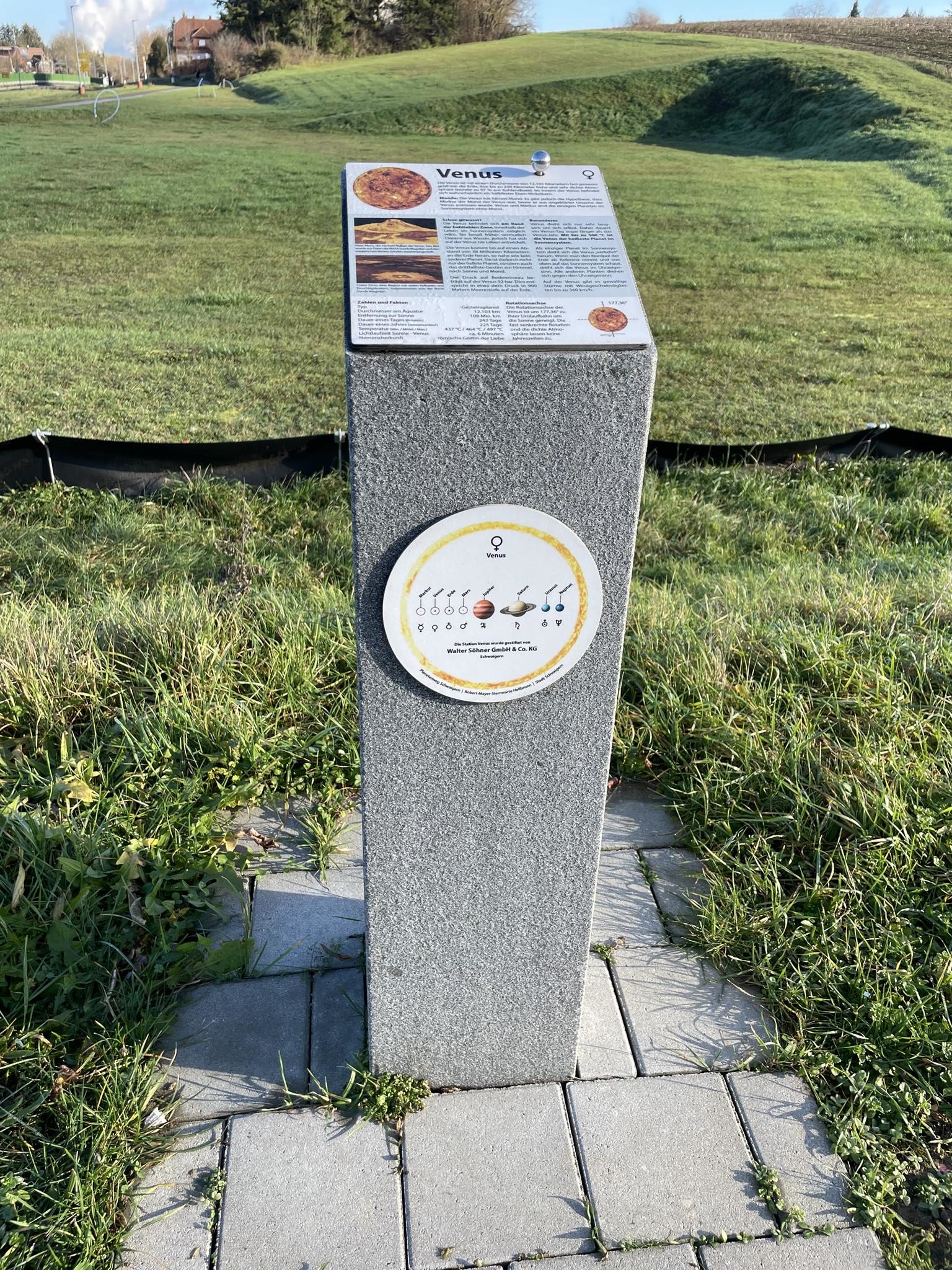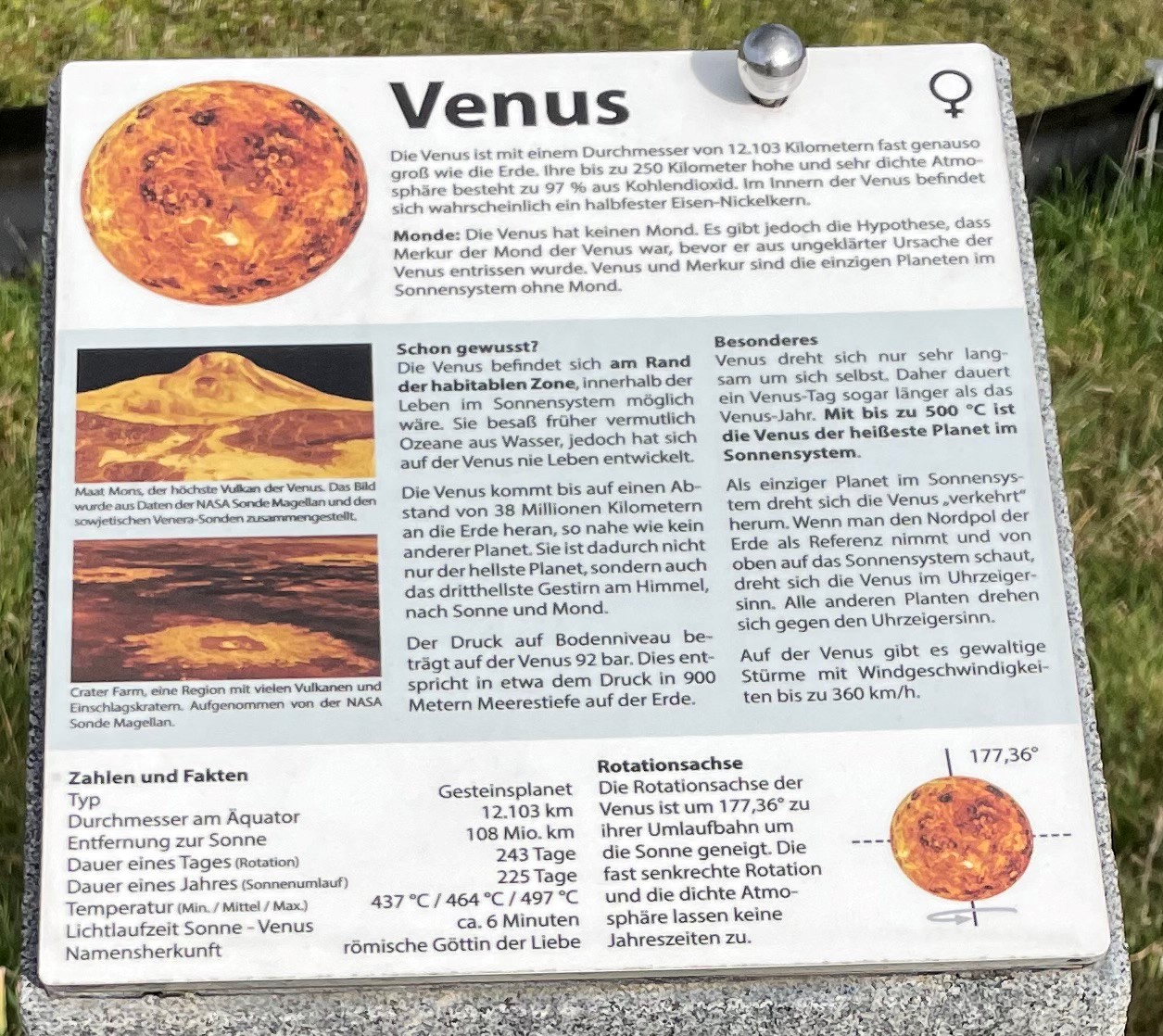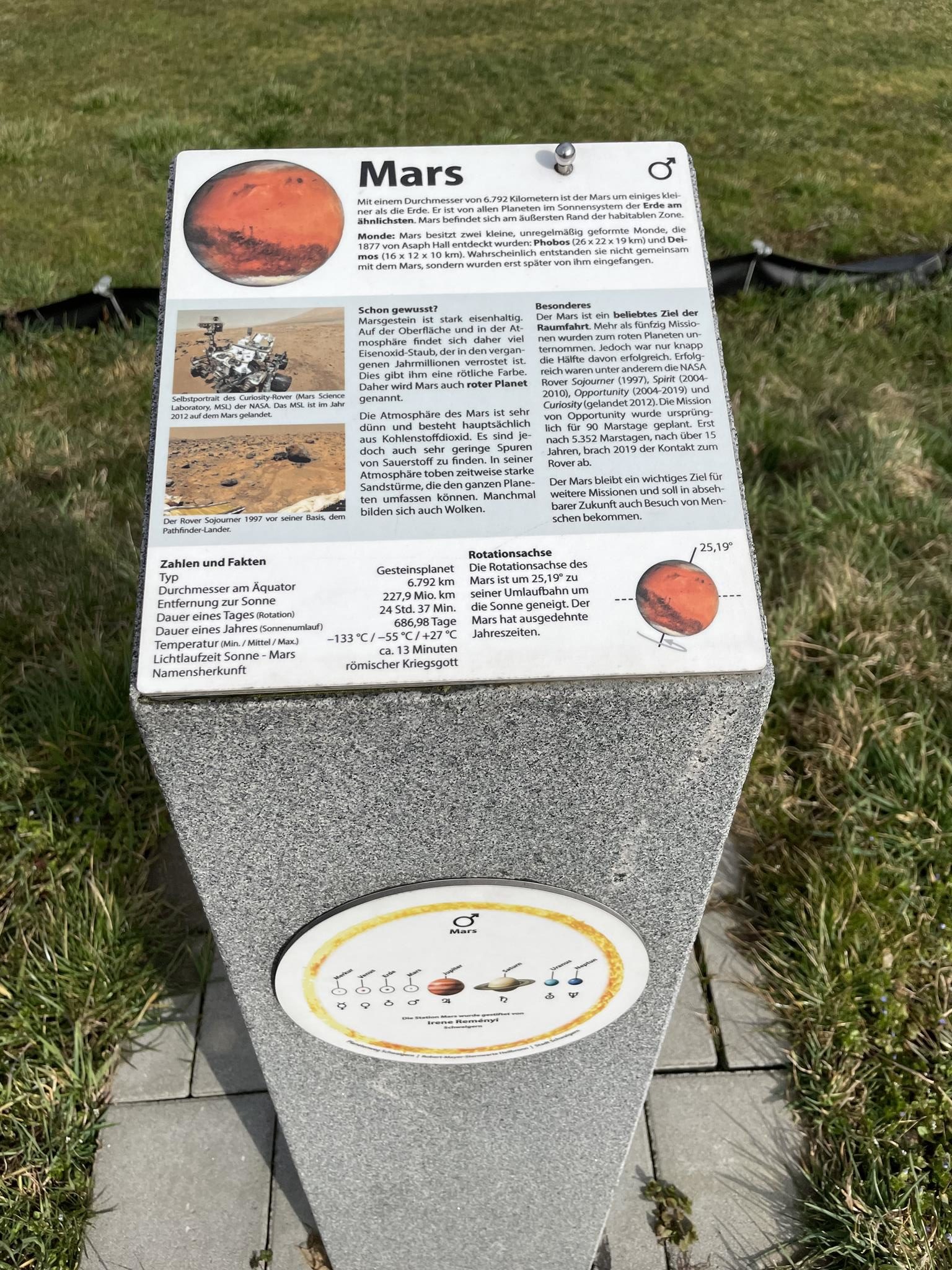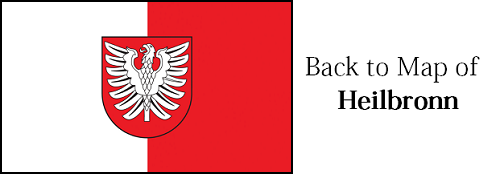Planetenweg Schwaigern – Robert Mayer Observatory
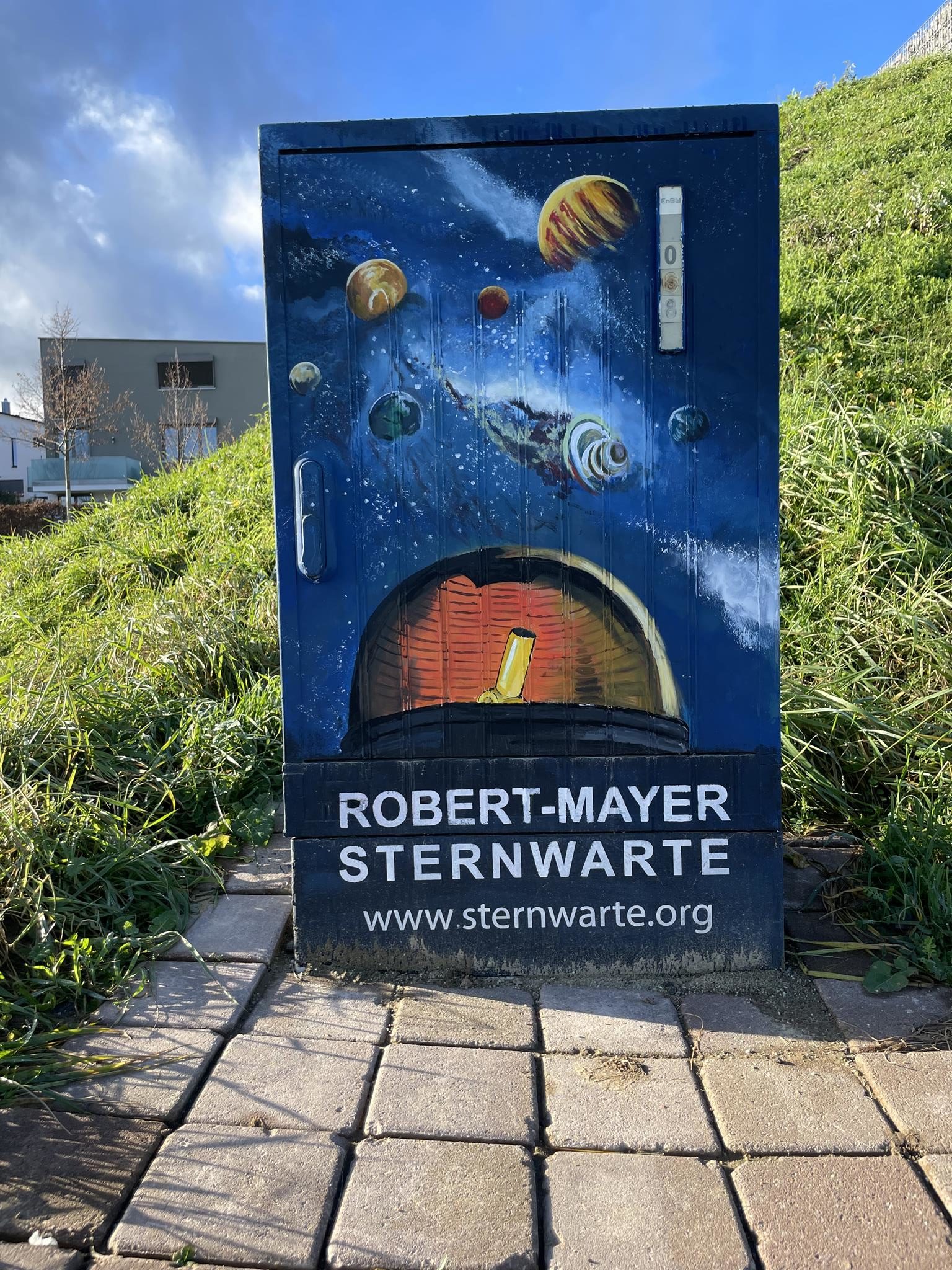
Among the more than two trillion galaxies in the observable universe, our Milky Way is an average-sized galaxy with about 250 billion stars. Our cosmic neighbor, the Andromeda galaxy (M31), is somewhat larger and has about 1,000 billion stars. But compared to IC 1101, one of the largest known galaxies, these unimaginable numbers are still tiny. IC 1101 contains well over 100 trillion stars.
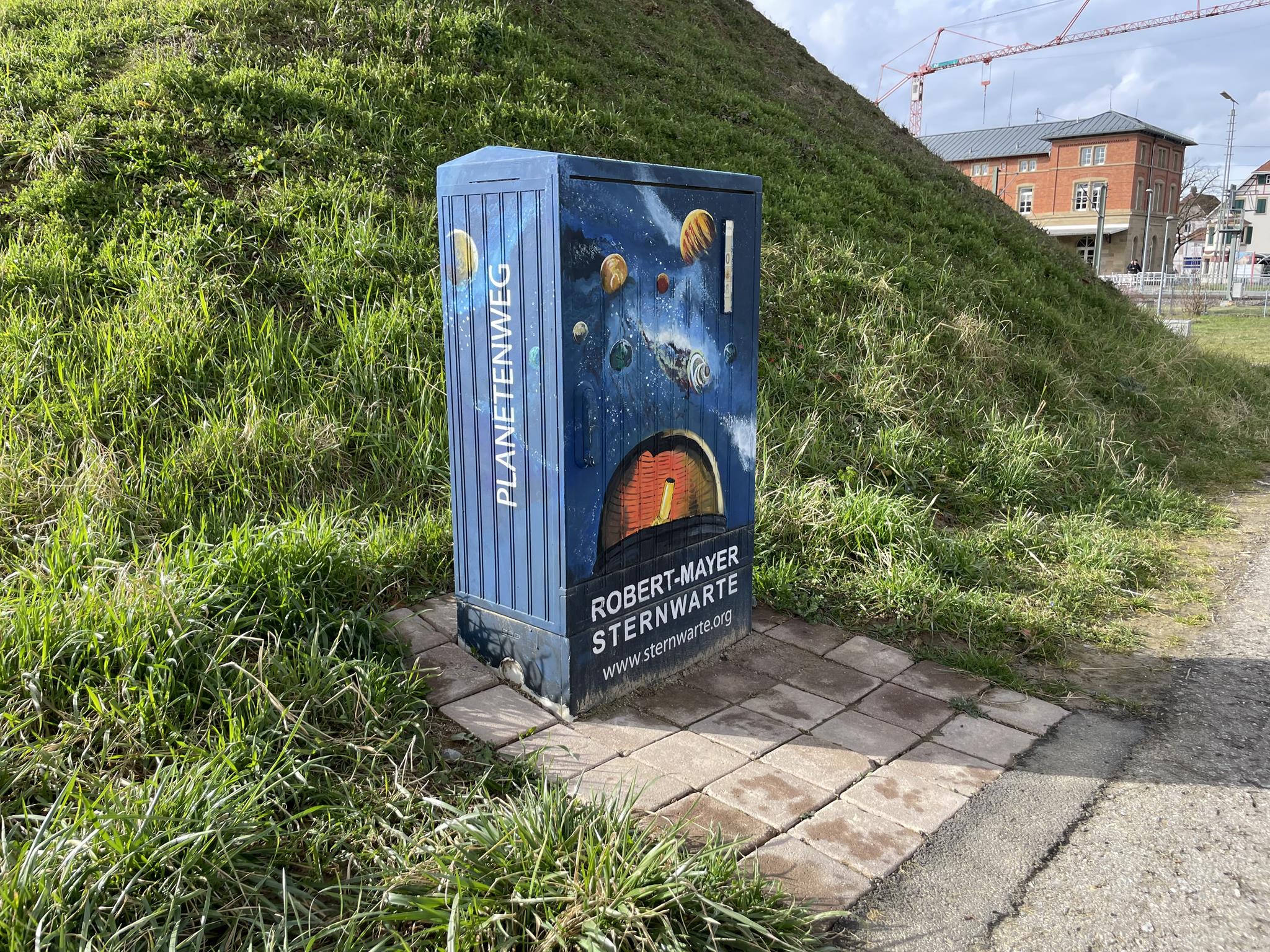
Size comparison between Milky Way, Ancirornedagataxy and IC 1101. Our Milky Way has a diameter of about 180,000 light-years, And-reime ‘wa 220,000 light-years and IC 1101 over 3,900,000 light-years. In our Milky Way, many stars also have planetary systems. Often these systems resemble our solar system. Whether our solar system is the cosmic normal case or an exception in the universe is intensively researched. Nevertheless our solar system is special: Here is our home, the earth. It is so far the only known place in this incomprehensibly large universe, on which life exists.
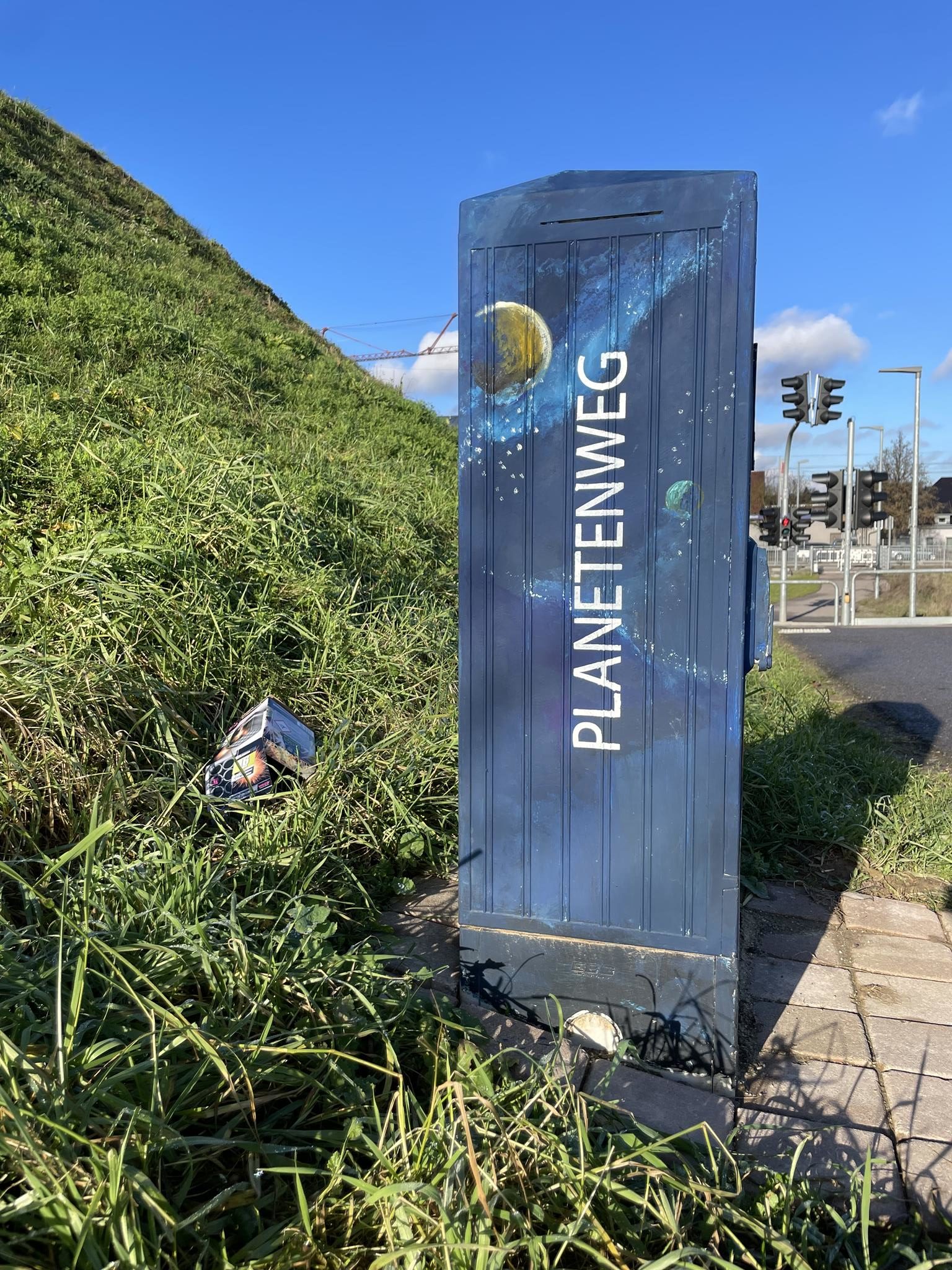
The planetary path Schwaigern invites you to explore our solar system and its planets. It is meant to impart astronomical knowledge and to visualize the enormous distances in our solar system. The most important information is presented in a short and sometimes very simplified way. At some points, however, more complex topics can be found, with the aim of arousing your curiosity and encouraging you to deal with individual topics and details even after your visit to the planetary path. Please pay attention to the traffic on the way through the residential area. Have fun exploring the solar system!
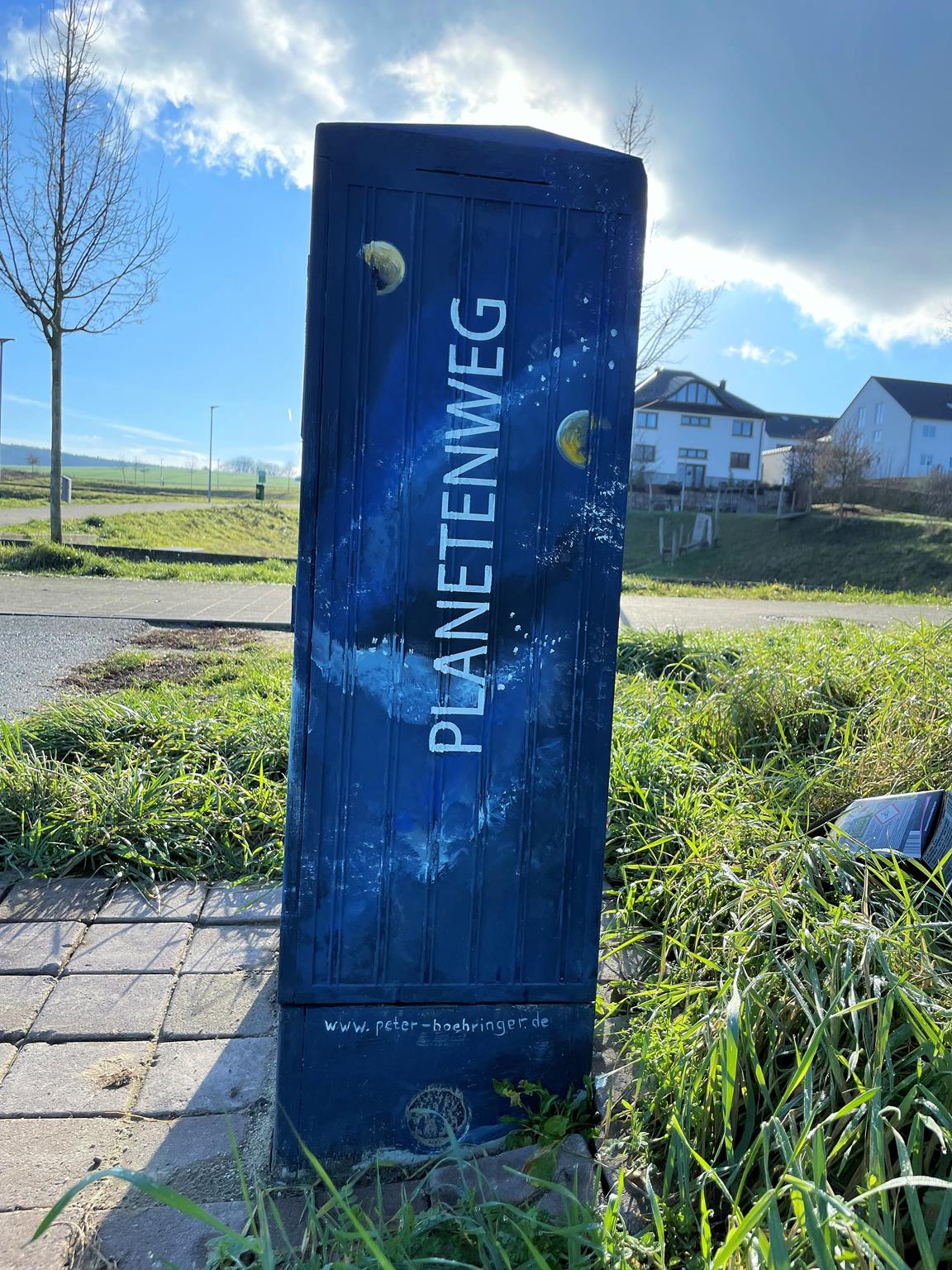
The Solar System
Solar System Formed about 4.6 billion years ago, our solar system is located about 28,000 light-years from the galactic center of the Milky Way. It revolves around the galactic center at a speed of 220 km/s and orbits it every 225 million years. The Milky Way is a barred spiral galaxy of the type SBb or 58c_ Our sun is located in the Orion arm (also local arm or Orion track) about 28,000 light years away from the center.
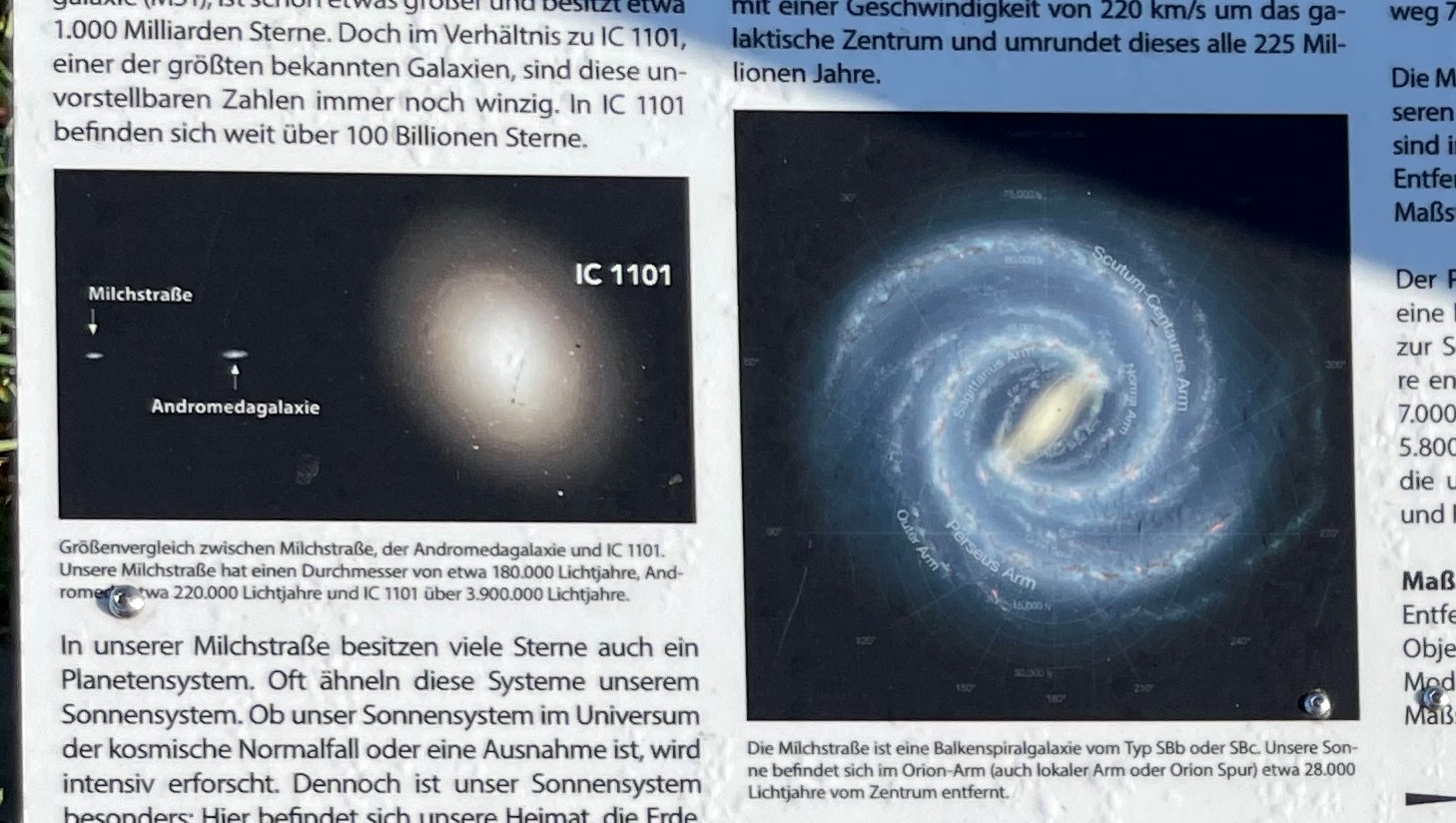
Our solar system consists of eight planets and countless other objects and dwarf planets located in the asteroid belt between Mars and Jupiter, in the Kulper belt beyond the orbit of Neptune, and in the Oort cloud at the edge of the solar system. The planets in our solar system were formed at about the same time from the same primordial cloud, but they have developed differently afterwards. The four inner planets Mercury, Venus, Earth and Mars are rocky planets. They are small and have a solid surface, consist mainly of rock, rotate slowly and have a metallic core. The four outer planets Jupiter, Saturn, Uranus and Neptune are large gas planets. They have no solid surface, consist of light gases like hydrogen and helium, rotate fast and mostly have a core of ice, rock or iron.
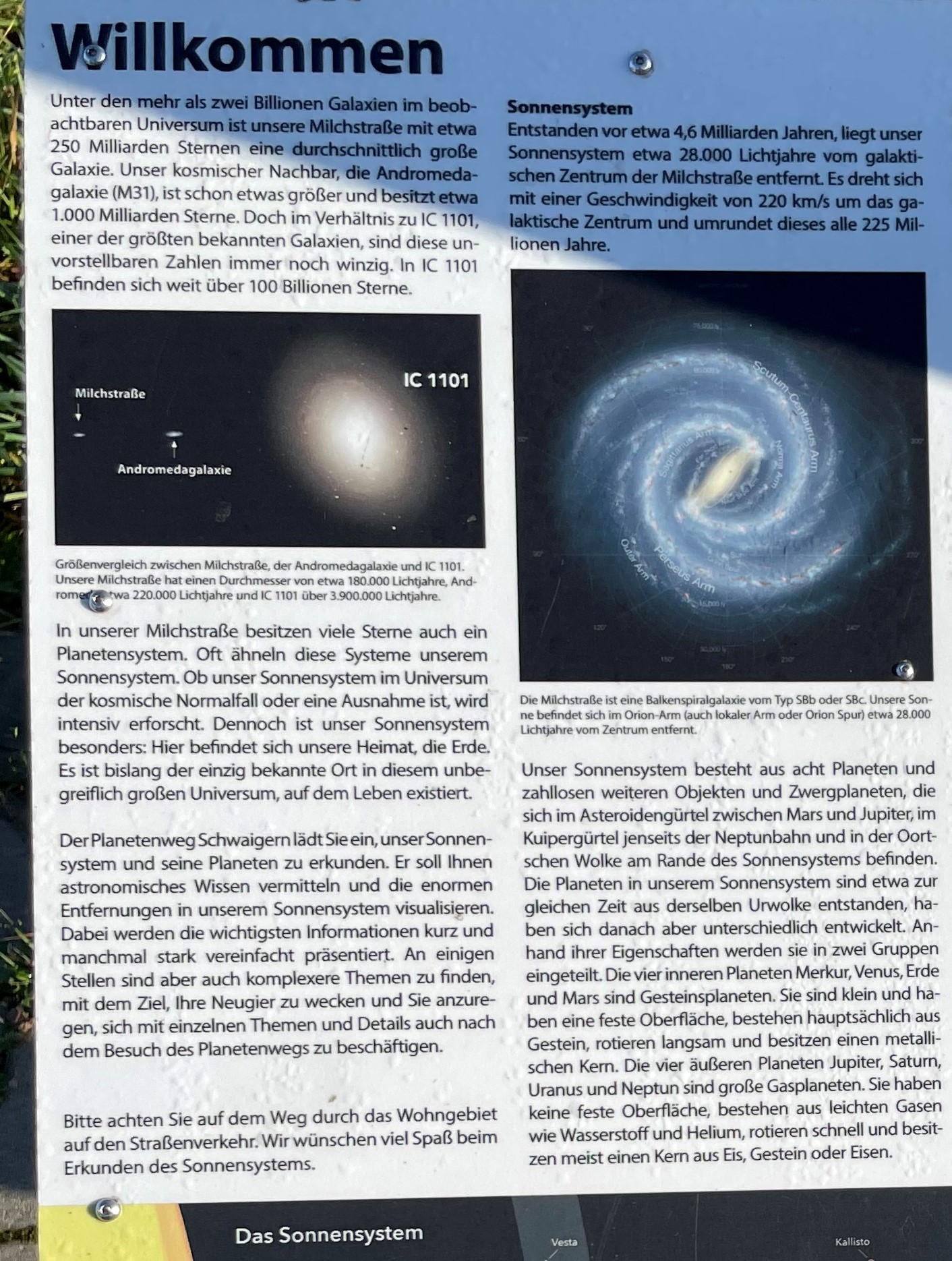
Models and planets: The distance of the planets to each other and to the sun is shown at a scale of 1 to 7,000,000,000. This means that one millimeter on the planetary path corresponds to 7,000 kilometers in reality. The models of the planets and the sun are magnified 10 times for better visualization. They are kept at a scale of 1 to 700,000,000. The distance of the Earth and the Moon is also kept at a scale of 1 to 700,000,000.
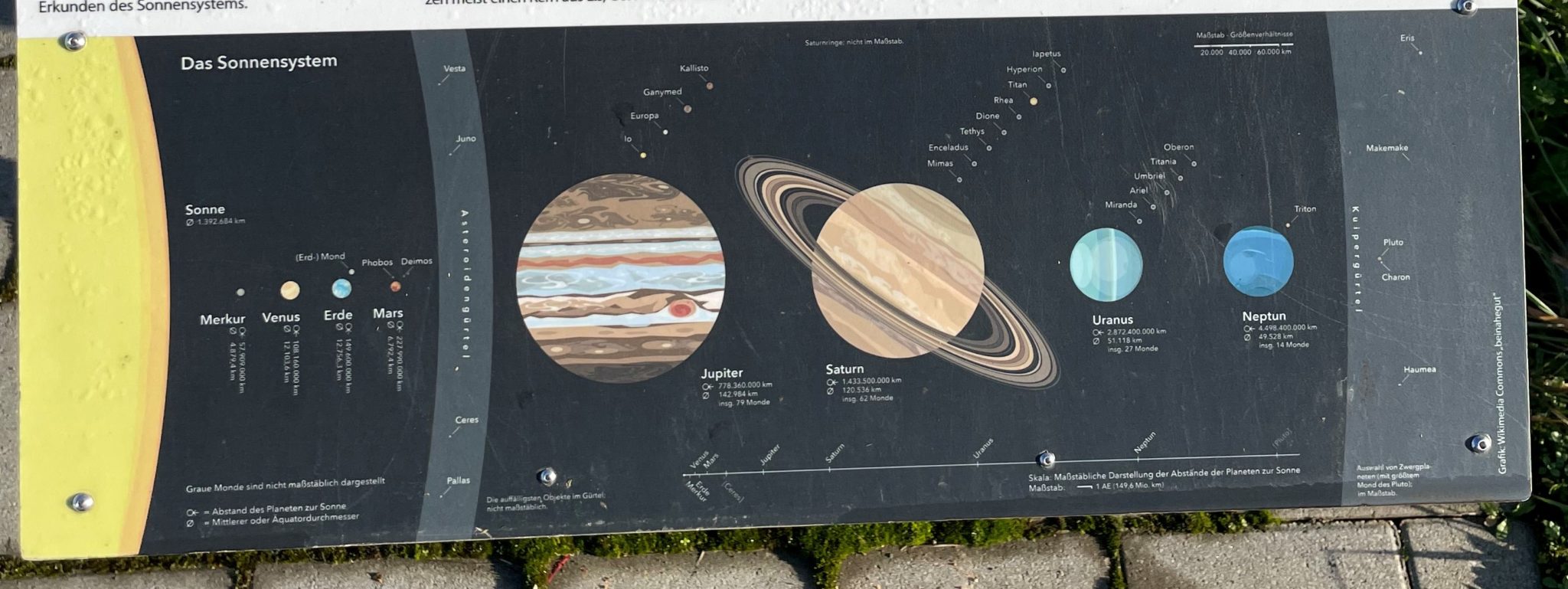
The planetary path has a length of about 600 meters between the Sun and Neptune. The nearest star to the sun is Proxima Centauri. It is 4.24 light years away. In the scale of the planetary path of 1 to 7.000.000.000 Proxima Centauri would be in a distance of about 5.800 kilometers. A distance, which corresponds approximately to the distance between Schwaigern and New York.
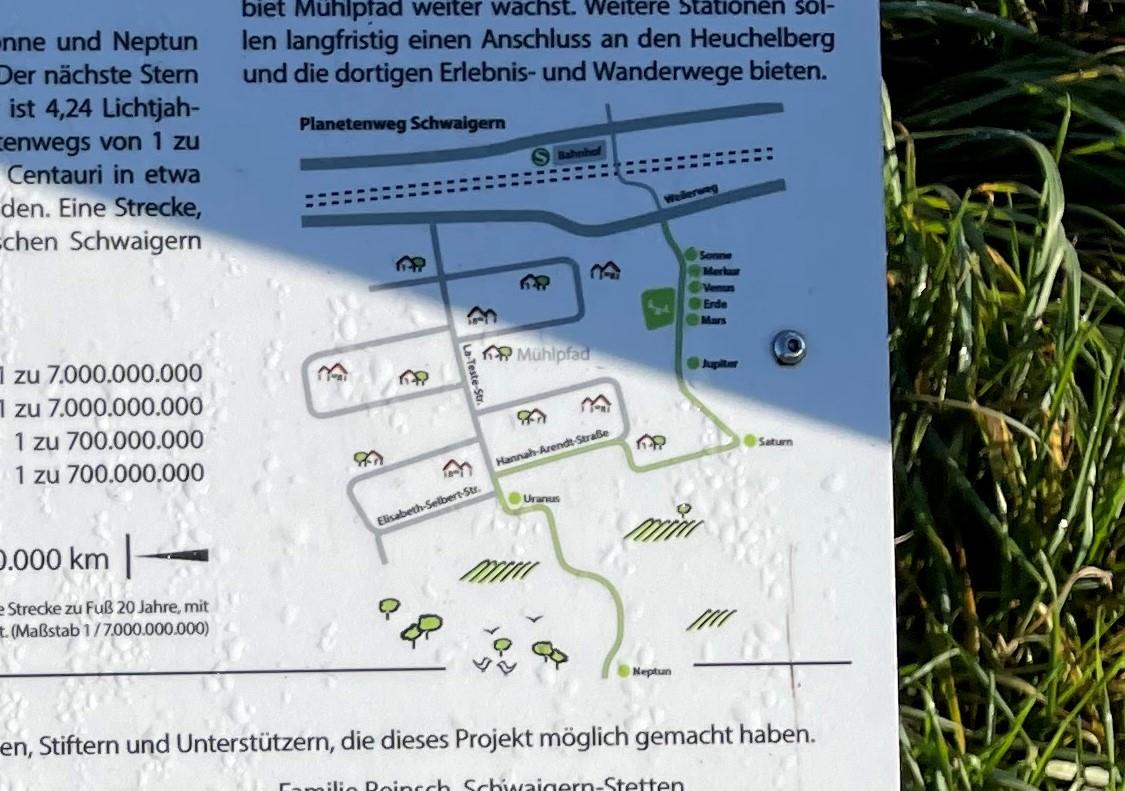
Scales: Distances of the stelae: Objects on the sponsor board: %delle of the planets: Earth-Moon system scale. 1 to 7.000.000.000 1 to 7.000.000.000 1 to 700.000.000 1 to 700.000,000. 110 cm correspond to 700.000 km I -nem If one does not make a break, one needs (for this distance by foot 20 years, by car one year and by airplane one month, (scale 1 / 7.000.000.000).
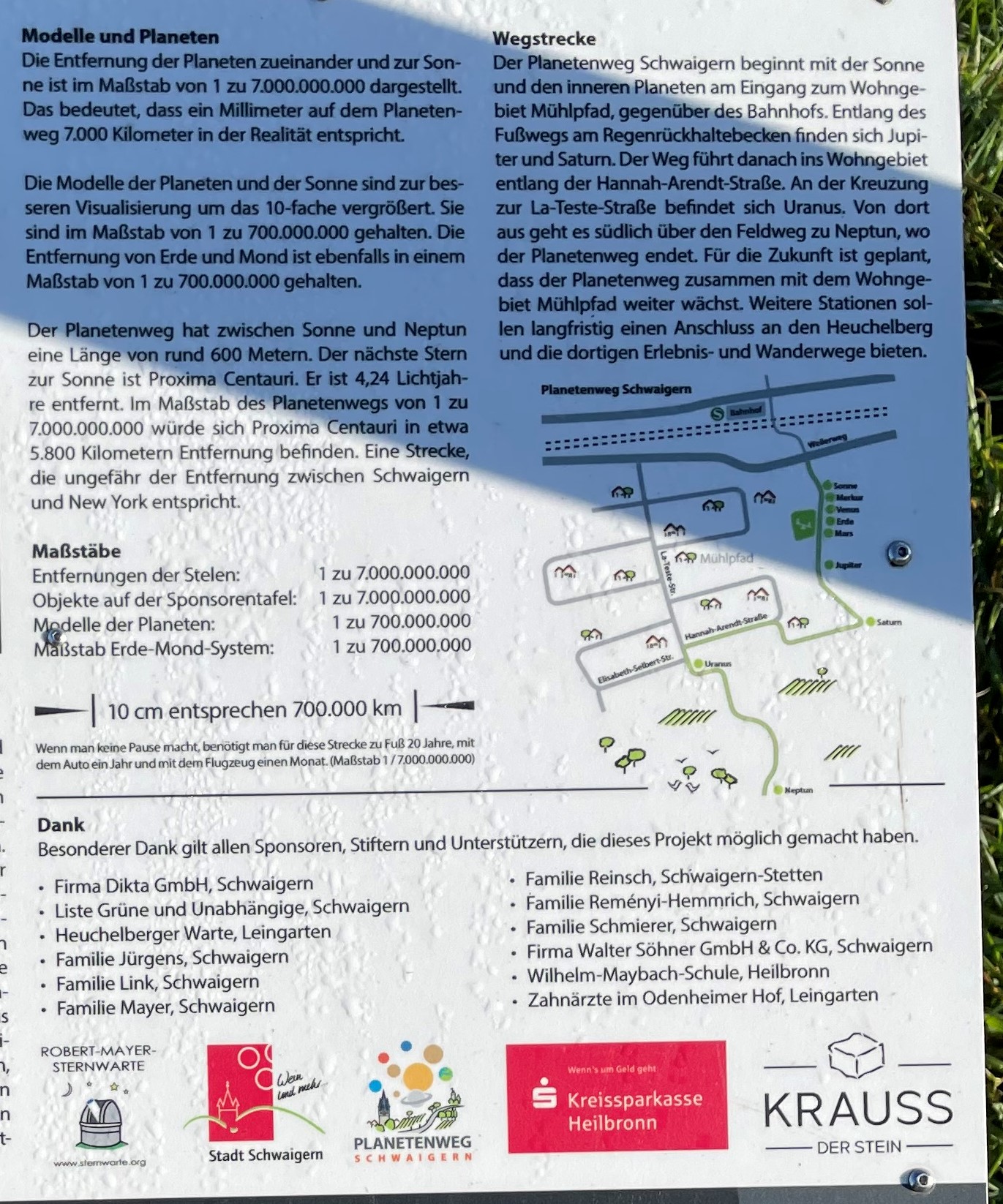
Way: The planet way Schwaigern begins with the sun and the inner planets at the entrance to the residential area Mühlpfad, opposite the railroad station. Along the footpath at the rain retention basin Jupiter and Saturn can be found. The path then leads into the residential area along Hannah-Arendt-Strasse. At the intersection with La-Teste-Strasse is Uranus. From there it goes south along the dirt road to Neptune, where the planetary path ends. For the future it is planned that the Planetenweg will grow together with the residential area Mühlpfad. In the long term, further stations should provide a connection to the Heuchelberg and the adventure and hiking trails there.
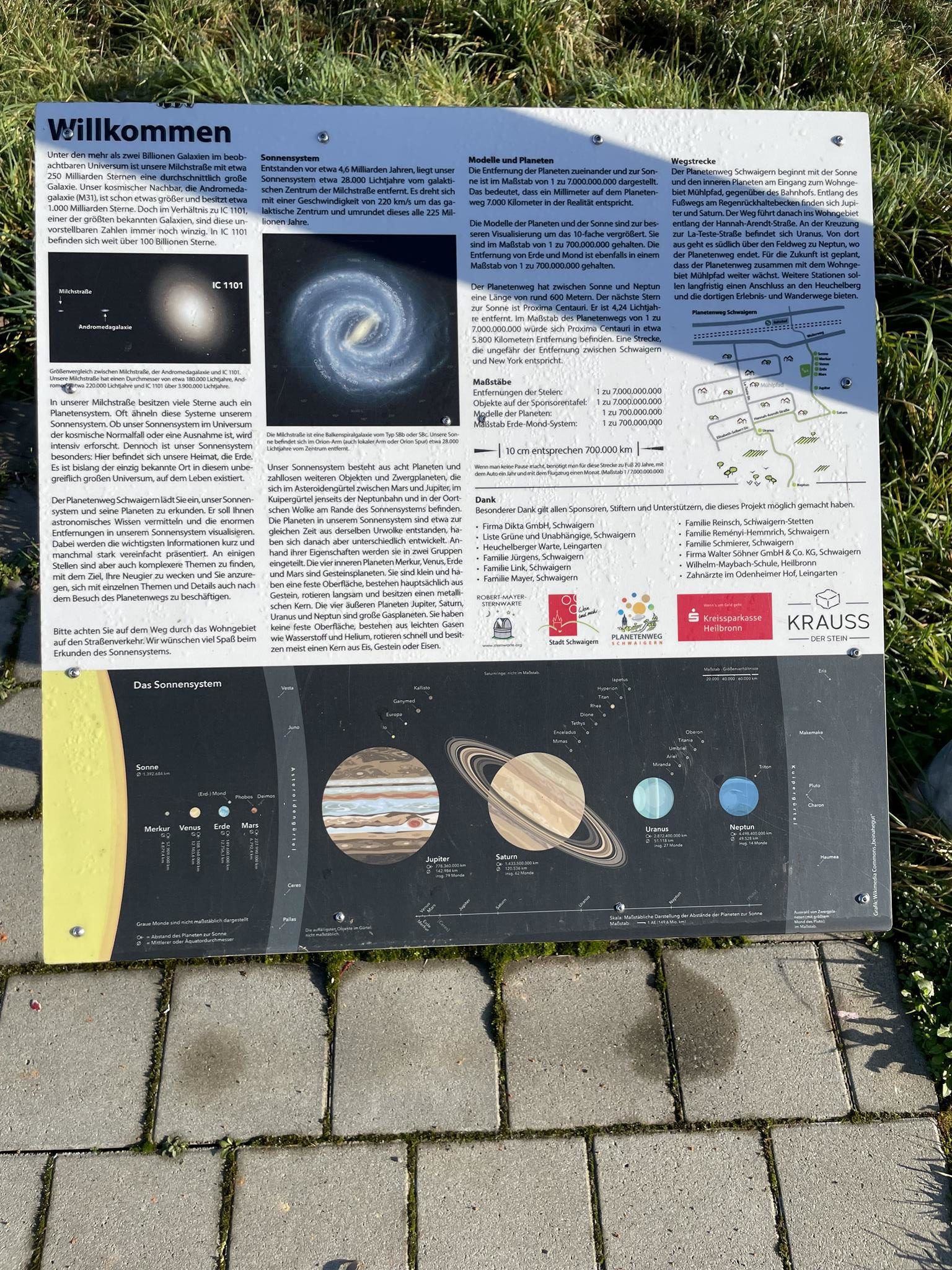
Sun – Sonne
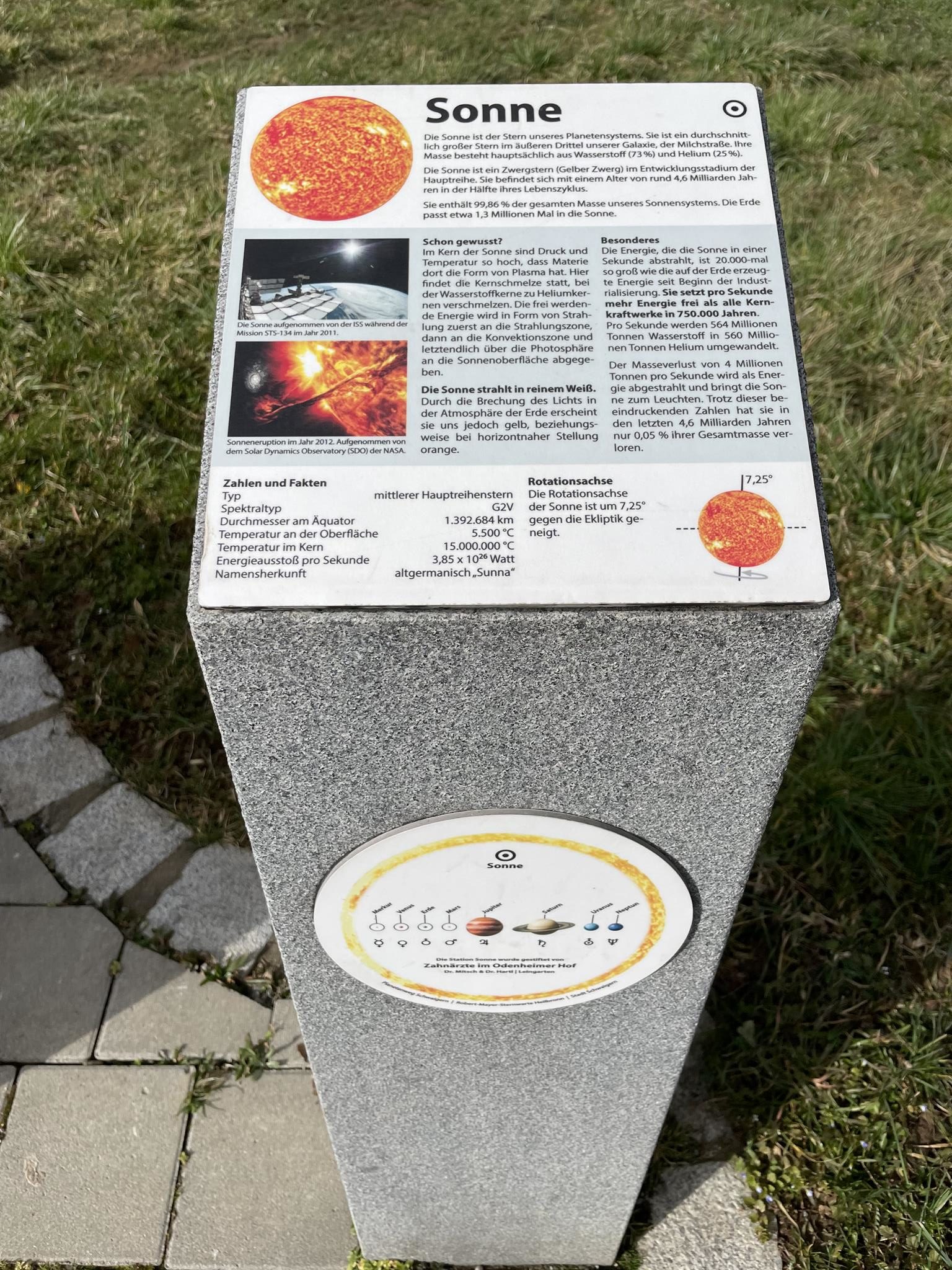
The Sun is the star of our planetary system. It is an average-sized star in the outer third of our galaxy, the Milky Way. Its mass consists mainly of hydrogen (73%) and helium (23%). The Sun is a Zvvergstern (yellow dwarf) in the development stage of the main sequence. It is halfway through its life cycle with an age of about 4.6 billion years. It contains 99.86% of the total mass of our solar system. The earth fits about 1.3 million times into the sun.
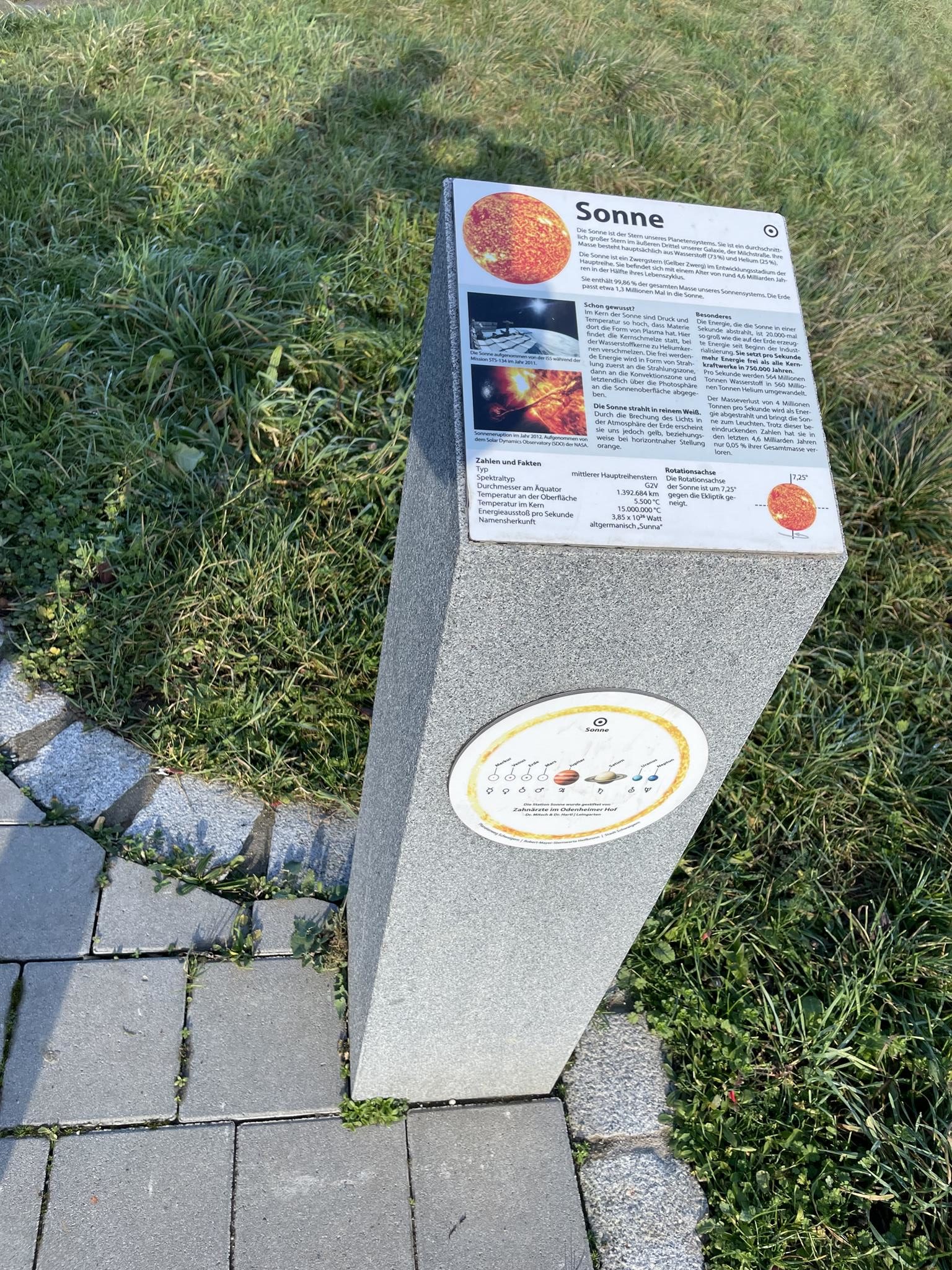
Already knew? Special In the core of the sun are pressure and The energy, dte the sun in etner temperature so high that matter second radiates, is 20,000 times there the form of plasma has. Here, the core meltdown takes place as large as the energy generated on Earth since the beginning of the industrialization of hydrogen nuclei into helium. It sets more energy per second to fuse. The energy that is released is first released to the radiation zone, and then to the convection zone, in the form of tons of hydrogen is converted into 560 MM tonnes of helium per second via the photosphere.
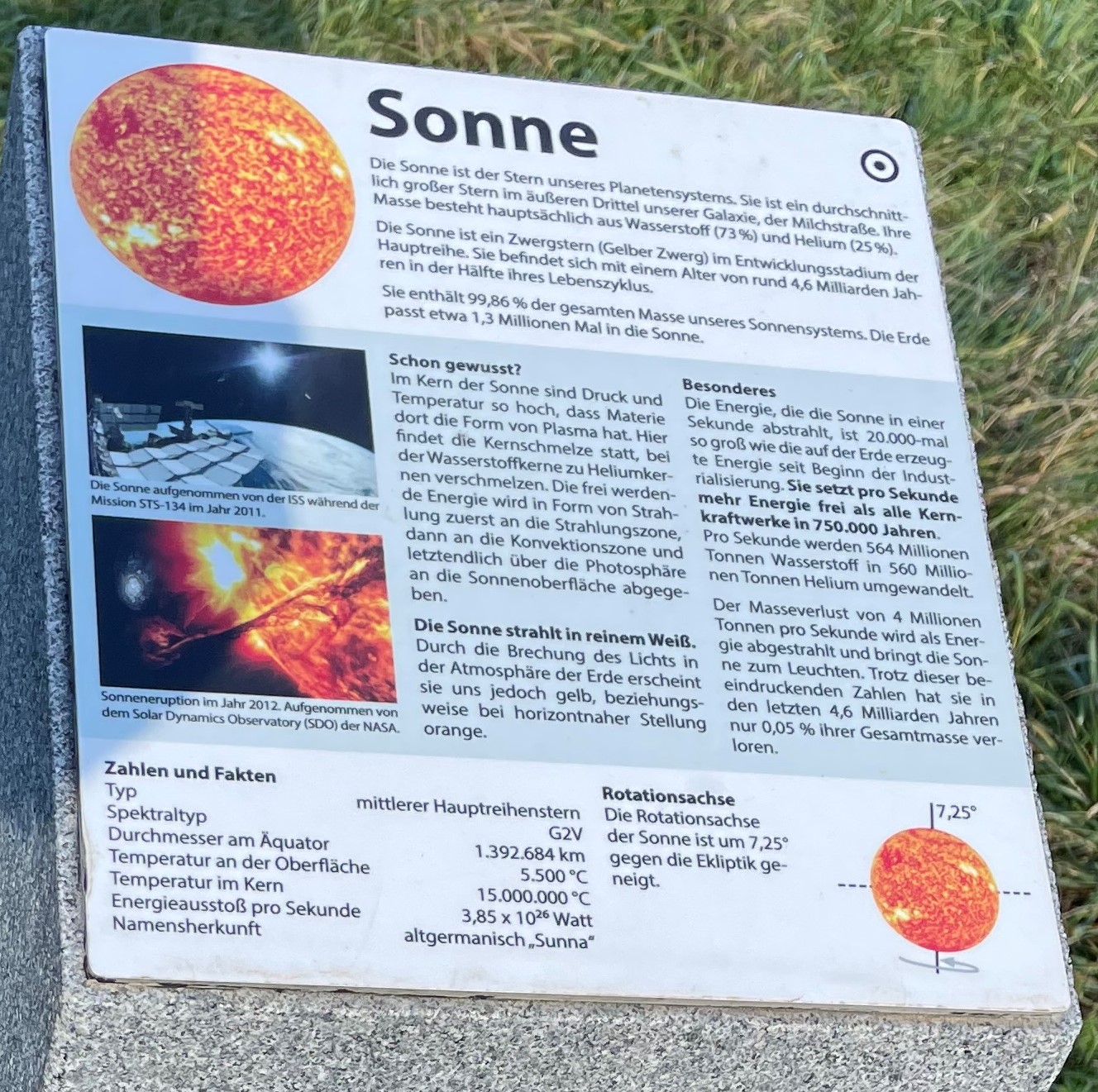
The sun shines in pure white. However, due to the refraction of light in the Earth’s atmosphere, it appears yellow to us, or orange if it is close to the horizon. The loss of mass of 4 million tons per second is radiated as energy and makes the sun shine. Despite these impressive numbers, it has lost only 0.05% of its total mass in the last 4.6 billion years. Central Main Sequence Star Rotational Axis The Sun’s G2V rotational axis is tilted 7.25° 1392,684 km from the ecliptic. 15,000,000 °C 3.85 x 1026 watts. Old germanic name is “Sunna”.
Merkur – Mercury
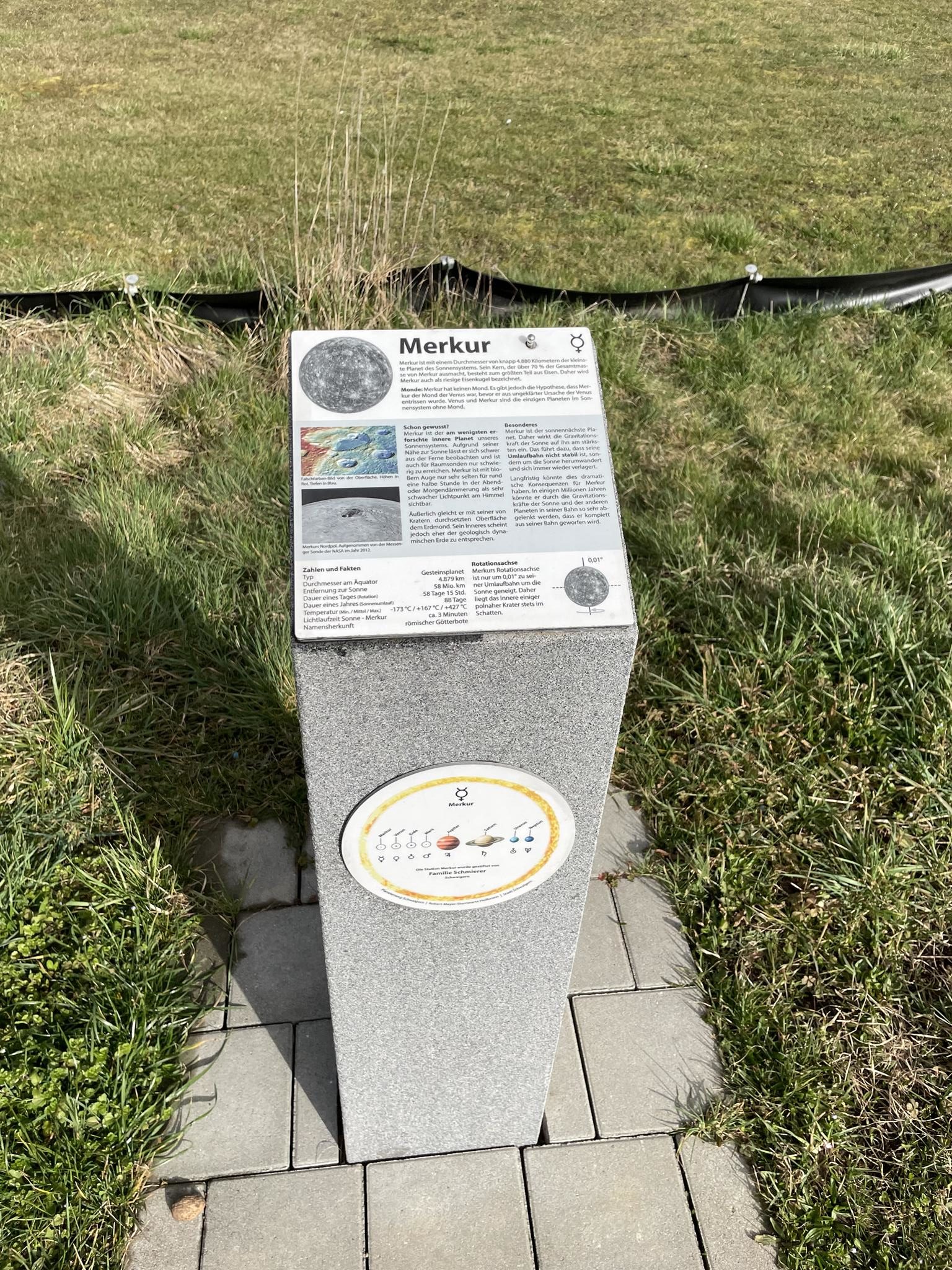
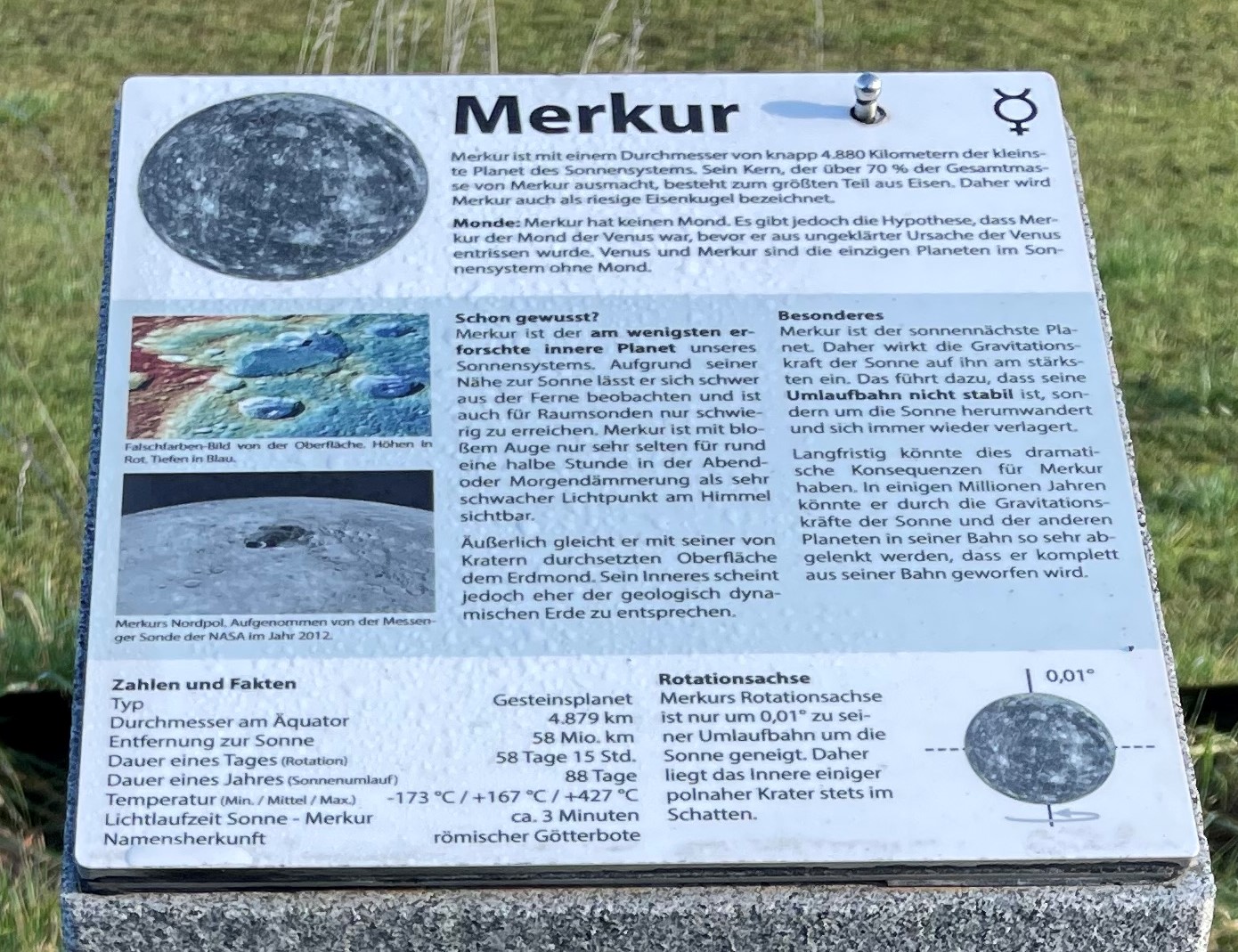
Venus
Earth
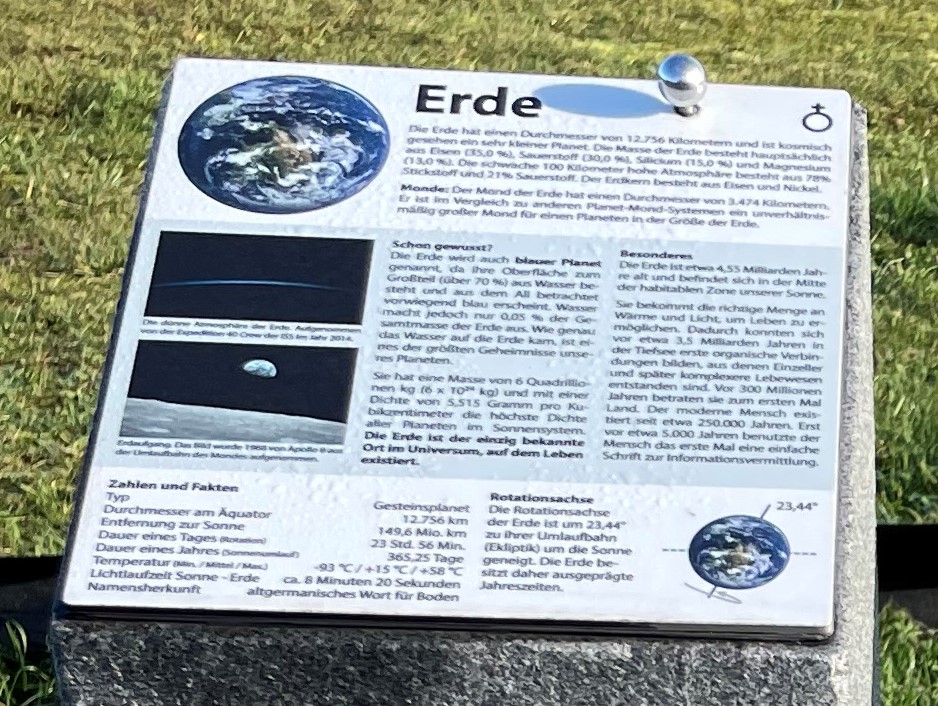
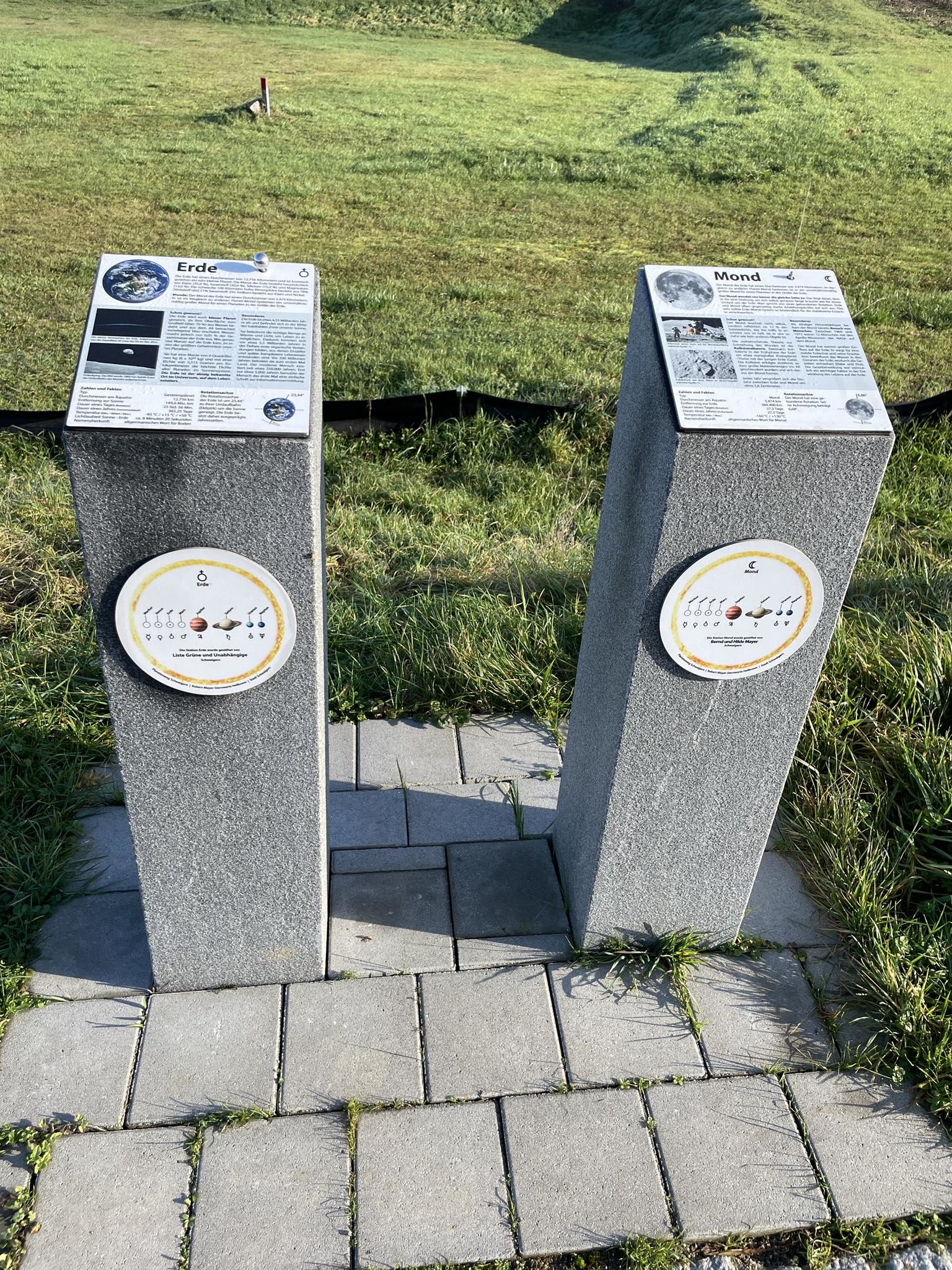
Moon
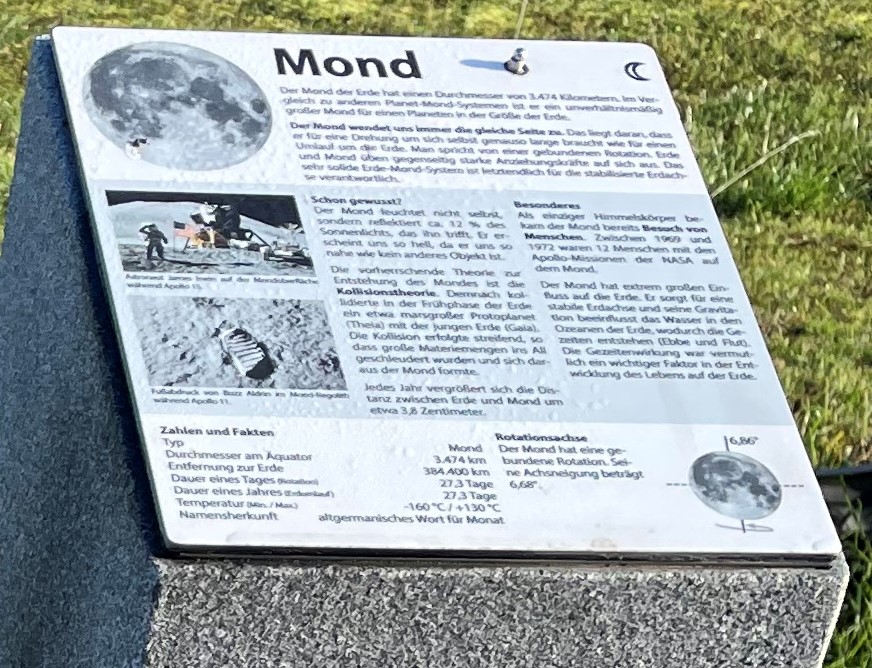
Mars
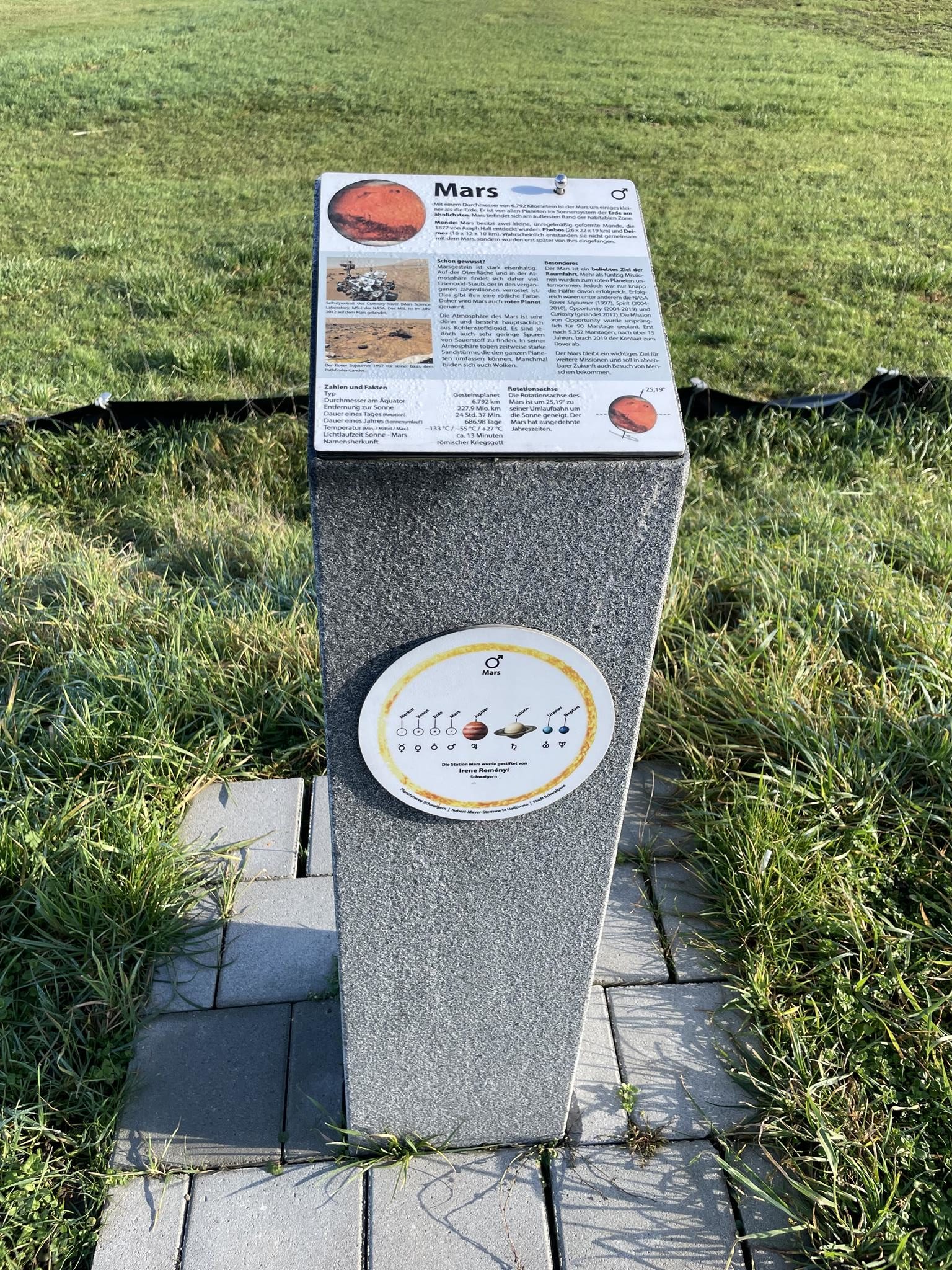
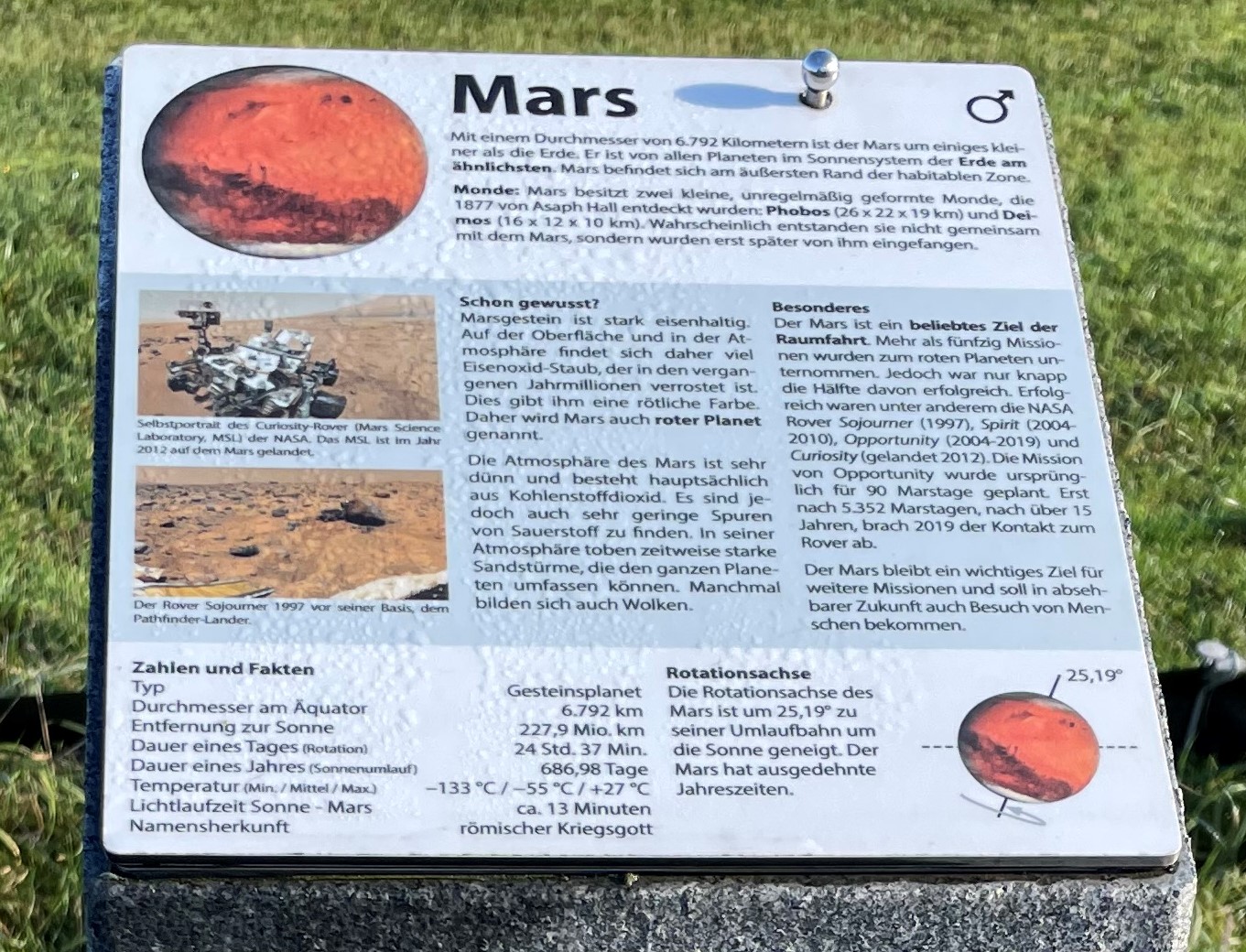
Jupiter
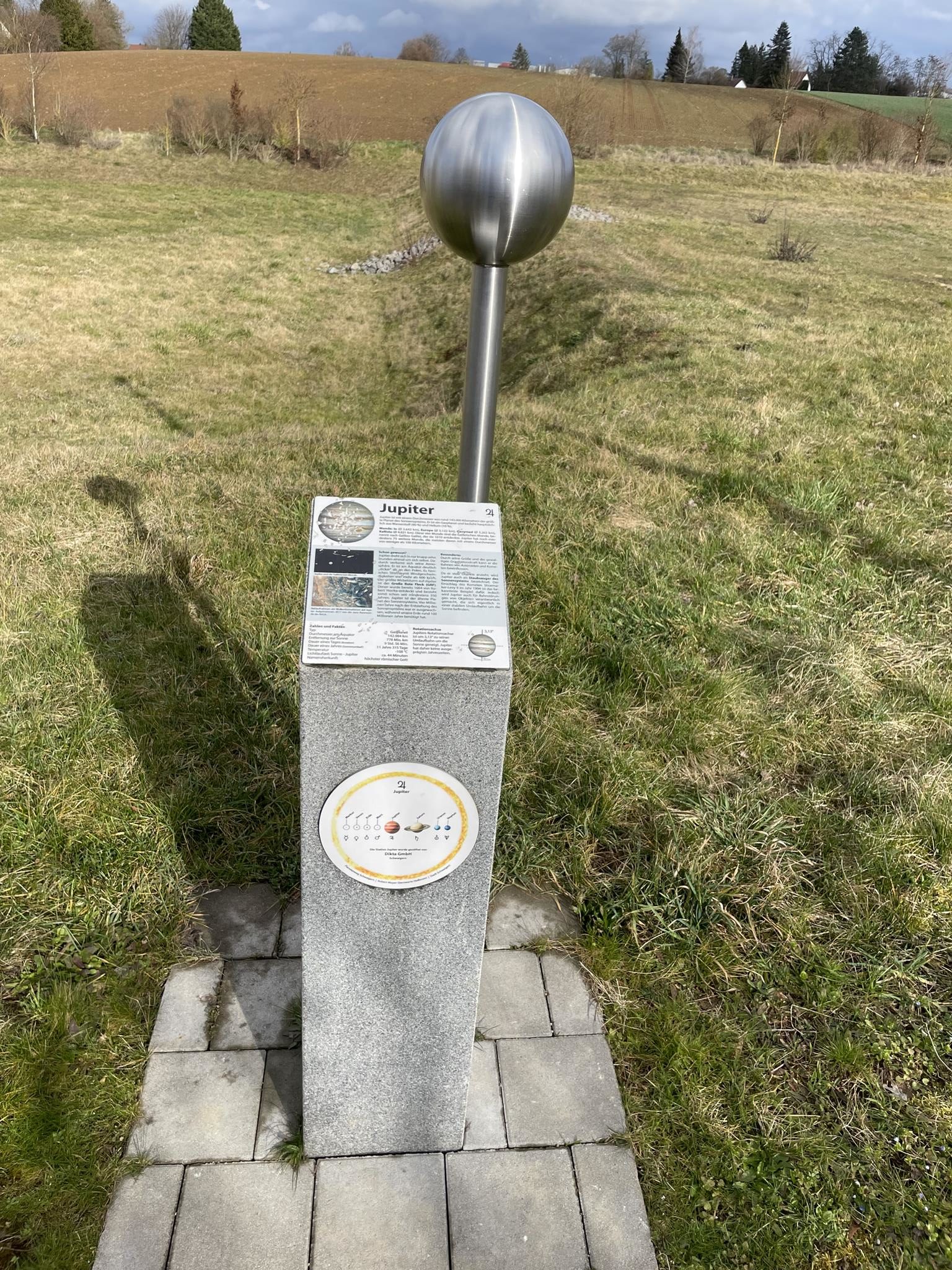
Saturn
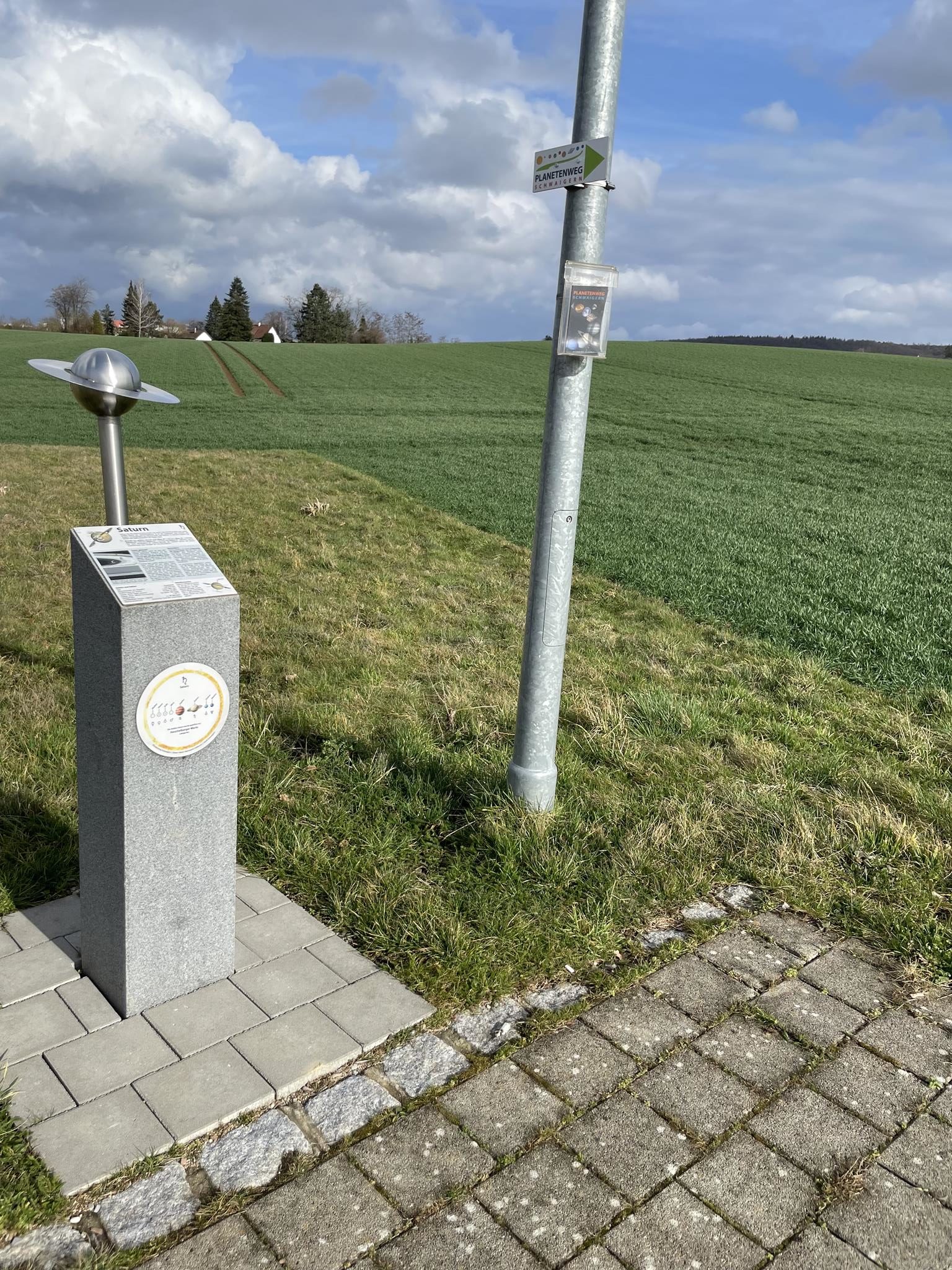
Uranus
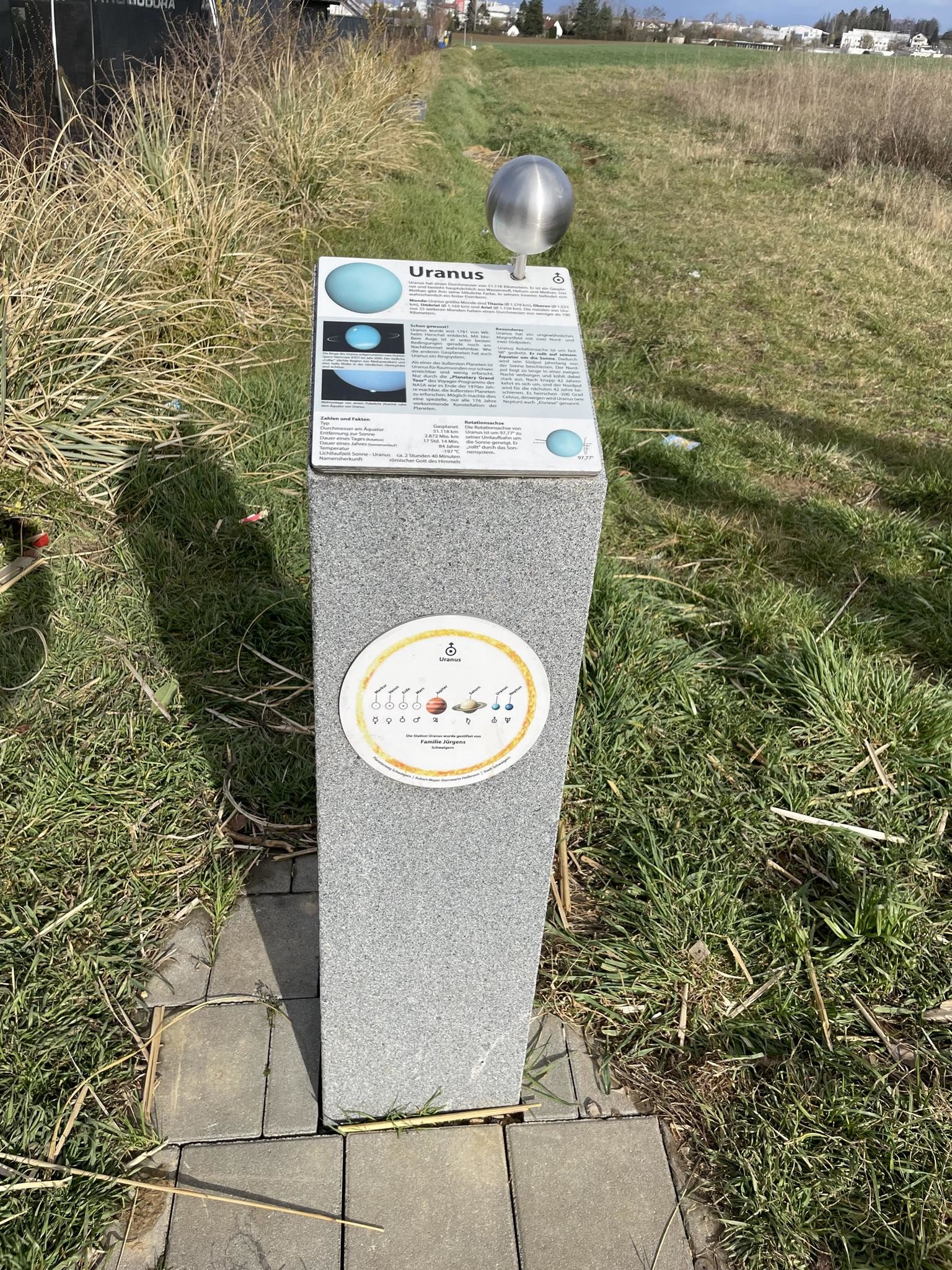
Neptun – Neptune
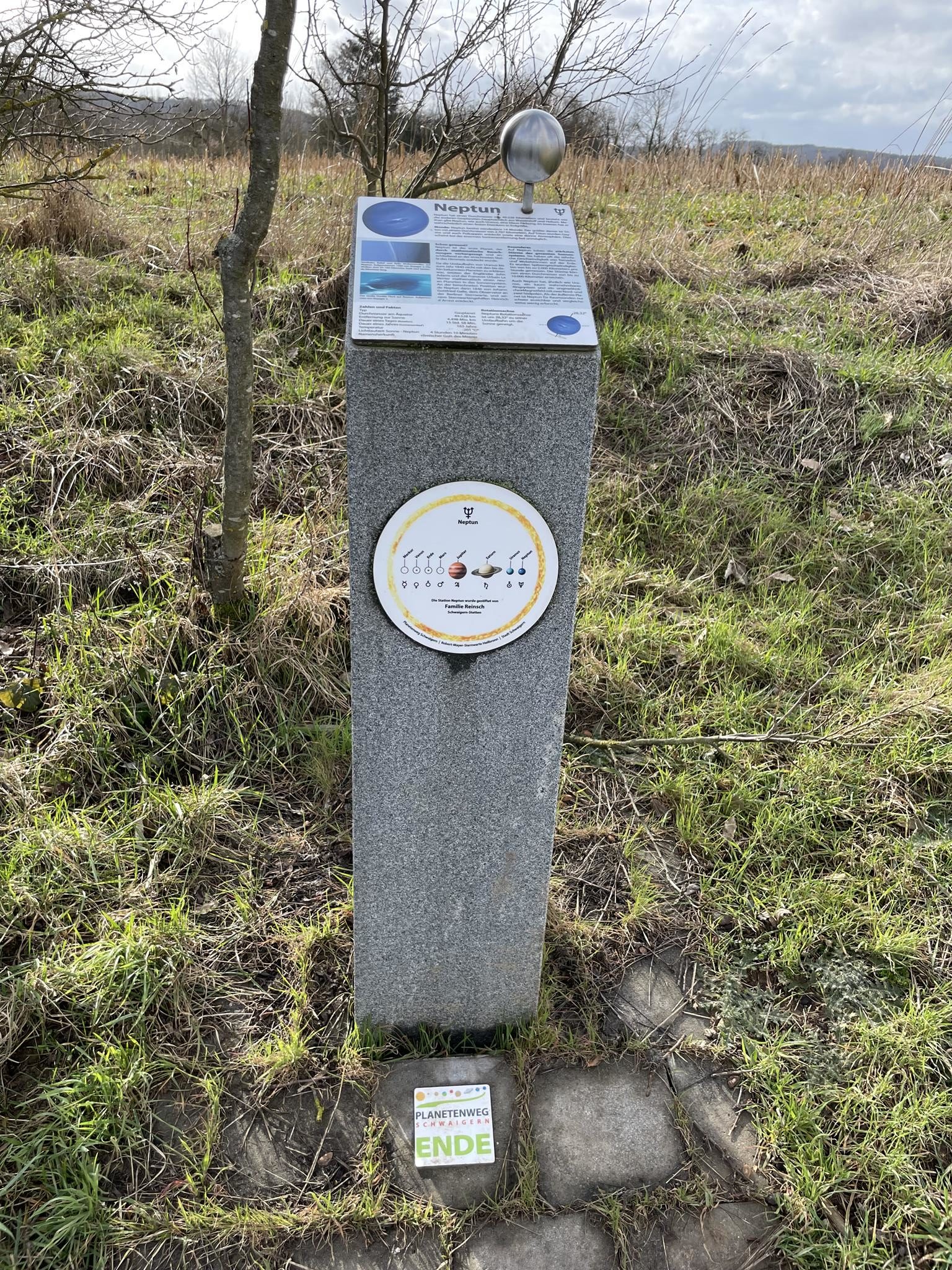
Asteroidengürtel – Asteroid Belt
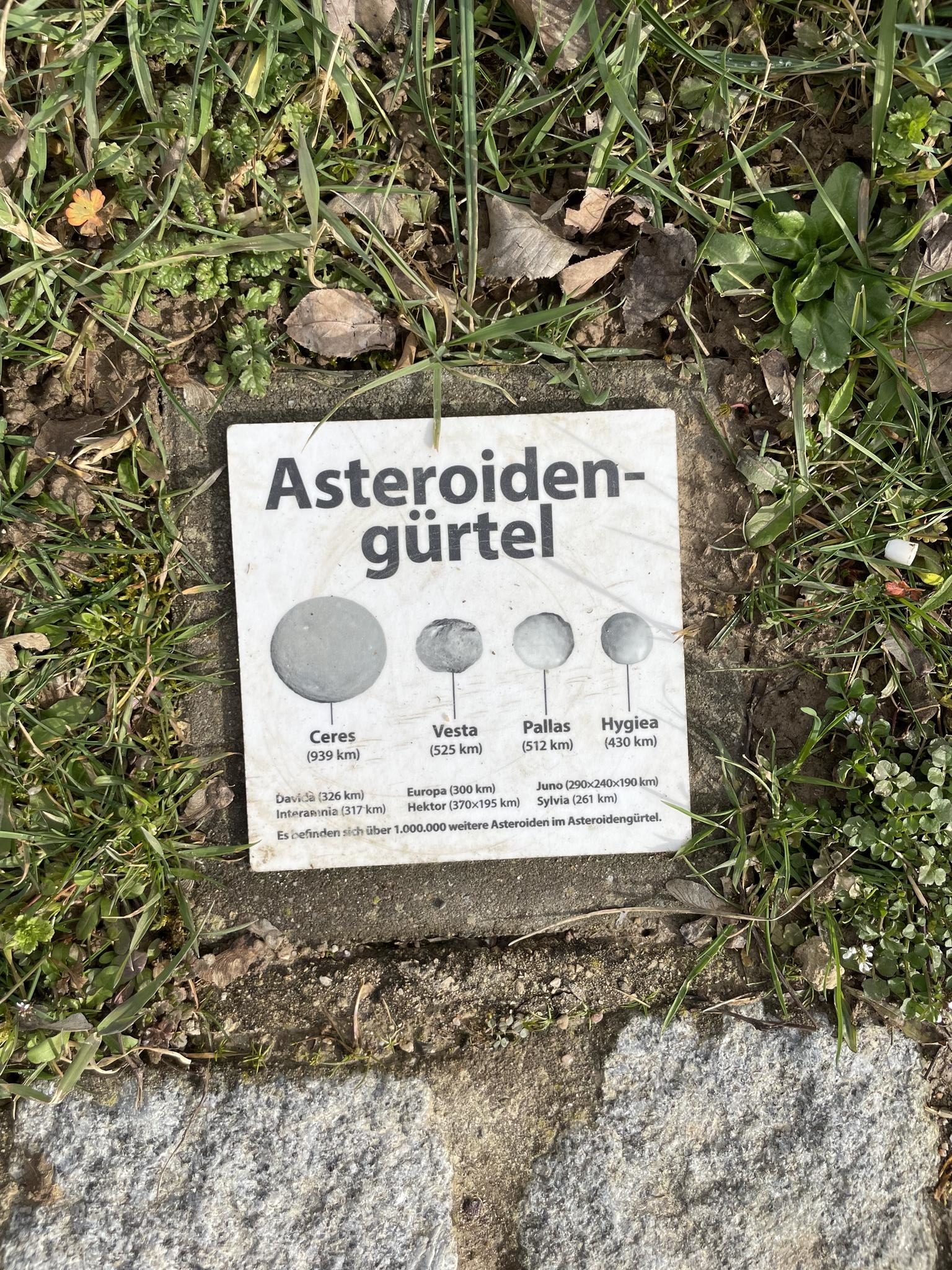
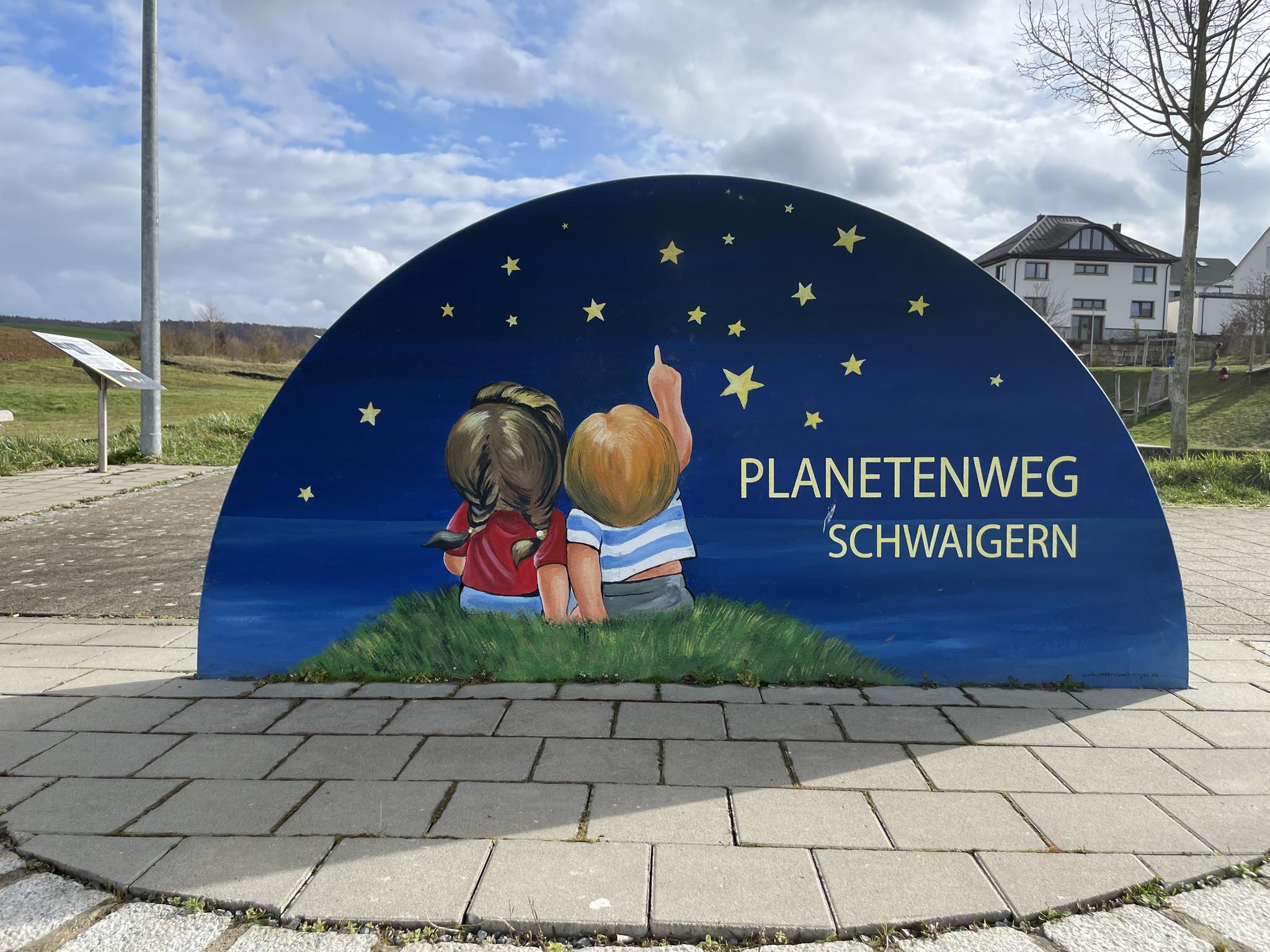
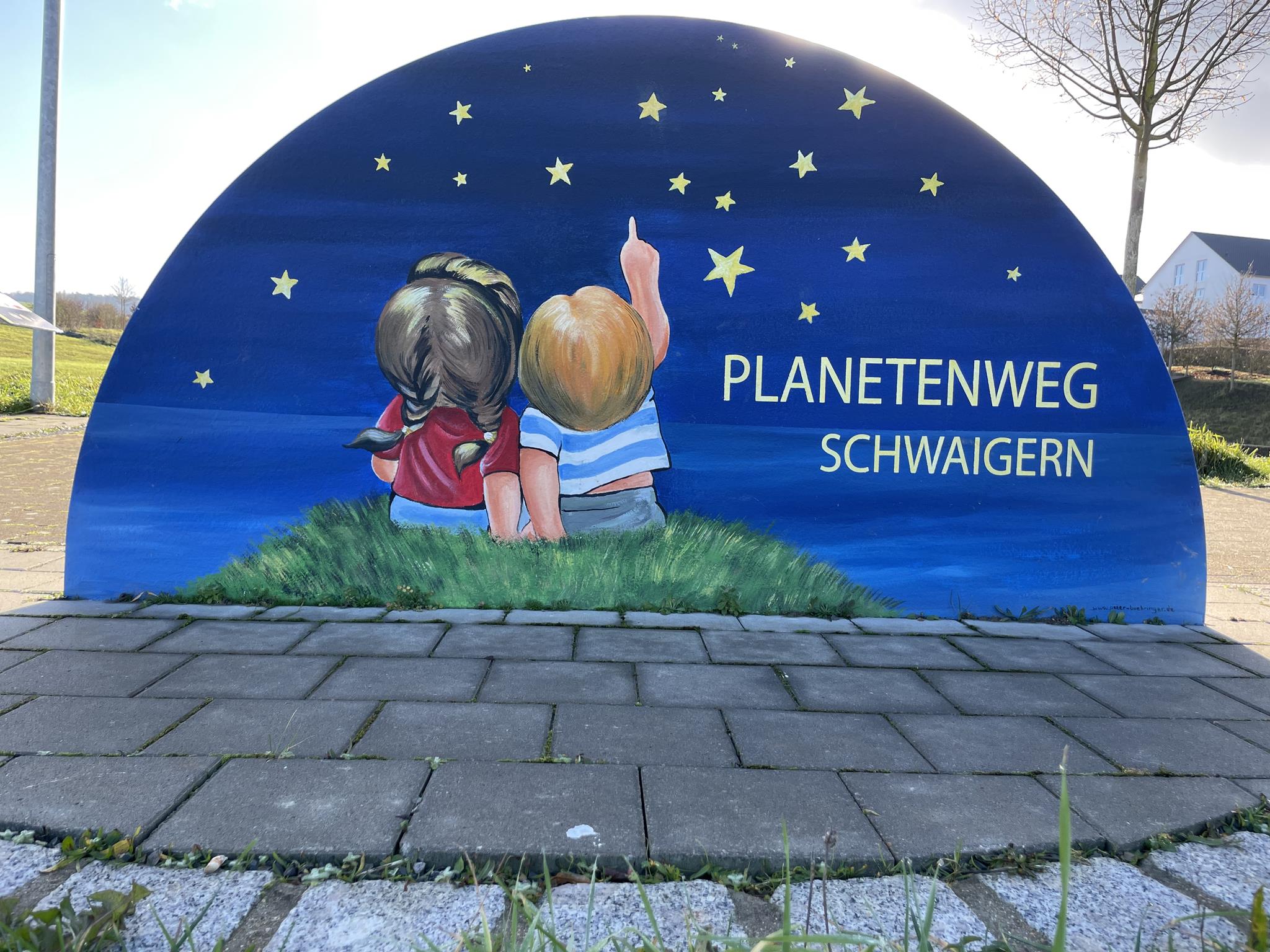

INFOTHEK
![]() Observatory: ROBERT MAYER STERNWARTE HEILBRONN
Observatory: ROBERT MAYER STERNWARTE HEILBRONN
![]() Website: https://www.sternwarte.org
Website: https://www.sternwarte.org
![]() Facebook: https://www.facebook.com/SternwarteHeilbronn
Facebook: https://www.facebook.com/SternwarteHeilbronn
![]() Instagram: https://www.instagram.com/sternwarte.heilbronn
Instagram: https://www.instagram.com/sternwarte.heilbronn
![]() Twitter: https://twitter.com/SternwarteHN
Twitter: https://twitter.com/SternwarteHN
![]() Photographer: BAUQUELDIE
Photographer: BAUQUELDIE
RECOMMENDABLE GRAFFITI SPOTS IN HEILBRONX
>>> Olga Zentrum <<<
>>> Olga Parking <<<
>>> Neckarhalde <<<
>>> Erwin Fuchs Skatepark <<<
>>> Stedinger 1 <<<
>>> Sülmer 68 <<<
>>> Hasengasse 2 <<<
MORE STREETART MAPS FROM GERMANY
>>> Streetart Map Berlin <<<
>>> Streetart Map Frankfurt <<<
>>> Streetart Map Hamburg <<<
>>> Streetart Map Dresden <<<
>>> Streetart Map Munich <<<
>>> Streetart Map Hannover <<<
>>> Streetart Map Heilbronn <<<
>>> Streetart Map Rheine <<<
>>> Streetart Map Insel Poel <<<
MORE ARTICLES ABOUT GERMANY
>>> Graffiti Mag MAINSTYLE <<<
>>> Stencil Artist TONA <<<
>>> Das Dreckige Dutzend <<<
>>> Sculptor Pit Ruge <<<
>>> Dosenkunst – Jörg Rudolph <<<
>>> Kollektive Offensive <<<
>>> Urban Artist AUTARK <<<
>>> Sprayer CESAR ONE <<<
>>> Filmmaker Bernd Lützeler <<<
>>> Lupus Alpha – Calligraffiti <<<
>>> Firedancer Cassiopeia <<<
>>> Collagist DeePee <<<
>>> Sprayer ARTMOS4 <<<
>>> Painter Serkan Goeren <<<
>>> ElectroClassics – THE OHOHOHS <<<
>>> Painter Frau Fenster <<<
>>> Photographer Niko Neuwirth <<<
>>> Performance – Dirk Baumanns <<<
>>> Graffiti Artist RAWS <<<
>>> Hannover Glocksee <<<
>>> TO5Z <<<
>>> Andreas Weingärtner <<<
>>> Sprayer BERK <<<
>>> Nashi Young Cho Jazz <<<
>>> Painter Serkan Goeren <<<
>>> AnniMalisch Techno <<<
>>> Tula Trash’s Trashland <<<
>>> Performer Tamara Zippel <<<
>>> Painter Angelika Grünberg <<<
>>> Kreativnomade Sam Khayari <<<
>>> Painter Peter Blohmann <<<
>>> Toy of the Ape <<<
>>> Weißwasser N3M <<<
>>> Painter Jay Gnomenfrau <<<
>>> Photographer Tom Hoenig <<<
>>> Frankfurt – Pillar Paradise <<<
